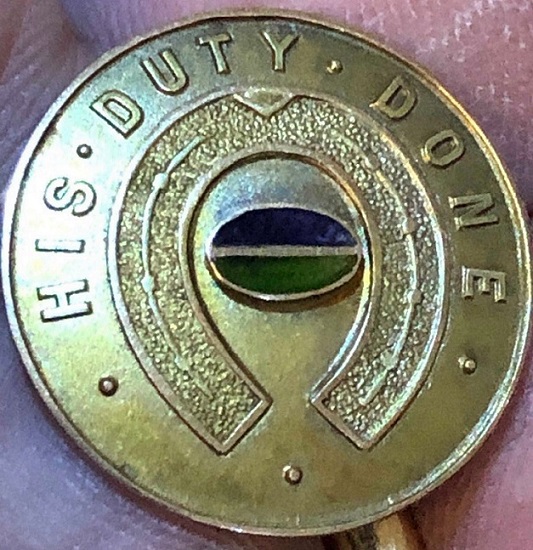34th BATTALION AIF.
Private: 192 Edward Rolfe "Robert" SPINKS.
Born: 1887. West Maitland, New South Wales, Australia. Birth Cert:26340/1887.
Died: 9th June 1917. Killed in Action. Messines,
Father: George Frederick B Spinks. (1851-25/08/1902) Died at Horse Shoe Bend, West Maitland. Death Cert:9899/1902.
Mother: Ada Emily Spinks. nee: Webb. (1864-1934)
INFORMATION
Edward Rolfe "Robert" Spinks enlisted with the AIF at West Maitland on the 31st on December 1915 and was allocated to A Company 34th Battalion AIF when they were raised in January 1916 and went into camp at the Rutherford Amy Camp at West Maitland.


Rutherford Army Camp, West Maitland 1916.
On the 1st of May the Battalion left by train from Farley Station for the Showground in Sydney. Equipped with kit bags and necessary clothing, and was reviewed in Moore Park by General: Gustave Mario RAMACIOTTI. On the following morning of the 2nd of May 1916 the men embarked on the transport HMAT A20 "Hororata" and sailed at 4:00 pm and disembarked at Plymouth, England on the 23rd June 1916 at 1:00 pm.

H.M.A.T. A20 "HORORATA
The Battalion en trained during the afternoon for Amesbury, arriving at midnight and marching to hutments at No: 1 Camp, Larkhill. Here the Battalion settled down to hard training, which included Route Marching, Trench Digging, Bomb Practice, Musketry and general Camp Routine. Later the Battalion moved to the No: 25 Camp and finished off their training, which included six days' battle practice and field work at the Bastard Trenches.
7th June 1917.
THE BATTLE OF MESSINES
The 3rd Australian Divisions first major offensive was at Messines Ridge on the 7th June 1917. The Australian 3rd Division was a part of the II Anzac Corps which was allotted to the first assault. The 25th New Zealand, 3rd Australian Division with the 4th Australian Division in reserve. The 4th Division were battle hardened troops who had fought many major battles.The 3rd Australian Division were having problems getting to the "jump off" point. The day before the 9th and 10th Infantry Brigades were bombarded by German Gas-Shells around Hill 63 and Ploegsteert Wood. Many of the Aussies were not wearing gas masks, but despite this they pressed on even though they received 500 casualties.
They made it to the "jump off" point but only just with some of the men from the 9th and 10th going straight over the top without stopping. The mines went up and the attack commenced behind a protective barrage. The II Anzac Corps were attacking on the right with their objective being the southern shoulder of the ridge which included Messines, the Dover and St Yves areas as far south to the east of Ploegsteert Wood.
Major General Sir John MONASH's 3rd Division had to contend with a tricky 3 mile approach out of Ploegsteert Wood and after the German gas attack, but they were not deterred. The 9th Infantry Brigade under Brigadier General: Alexander JOBSON and the 10th Infantry Brigade under Brigadier General W R NICHOLL had just made the jumping off point but some of the men did not stop, going straight into the assault from the approach march.
Their objective lay between St Yves and the Douve. The mines at Trench 127 and Trench 12 at Factory Farm were laid to aid this task. The explosions erupted a few seconds before zero hour and created craters of 200 feet in diameter, completely obliterating the German defense line as the 9th and 10th Infantry Brigades went over the top. The mine crates forced the 9th and 10th Brigades to veer to the left and right which caused some confusion with the main assault. It is testimony to the quality of training that every man knew the ground, tasks and objectives so well.
Private: 1804 John CARROLL 33rd Battalion, rushed the enemy's trench and bayoneted four of the German occupants. He then noticed a comrade in difficulties and went to his assistance, killing another German. He then attacked single handed a German Machine Gun Team, killing all three of them and capturing the gun. He later rescued two of his comrades who had been buried alive by German Shell Fire, and in spite of heavy shelling and machine gun fire he dug them out alive and saved them from certain death. John was awarded the Victoria Cross.
The German forward zone was completely engulfed and taken by the main assault. The two supporting battalions of each brigade then passed the leading battalion to continue the advance. The men were constantly re-supplied and the ridge was taken. There were many German prisoners taken during the offensive. The 3rd Division was well ahead with the 9th Infantry Brigade pushing on beyond Grey Farm, and on the right the 10th Infantry Brigade were veering left towards Septieme Barn north of Douve.
The German resistance was heavy but was generally brushed aside by tanks and artillery before the infantry had to become too involved.The 4th Bavarian Divisions Artillery had made little impact, but as the day wore on the 3rd Division and later the 4th Australian Division received many casualties from German artillery. (70% of all casualties during WW1 were from artillery).
By 9:00am nearly 6 hours after the assault began the Germans were in dissaray, but there was a major problem as the Australians received less casualties as anticipated and when ordered to dig into the ridge they had so many men, that some could not find shelter. the 35th battalion were dug in around Seaforth Farm.
The second phase of the operation was to take the Oosttaverne Line. The 3rd Australian Division would now be in reserve with the 4th Division attacking. The 9th Infantry Brigade (33-34-35-36Bn) were near Thatched Cottage facing Warneton. The river Lys was to their right and the Ploegsteert Wood was now behind them.
Once their objectives were taken the troops consolidated. A barrage to stop and counter attack was shortened and caught three battalions which had to retire. By 9:00 pm this part of the Oosttaverne Line was abandoned. At 10:45 pm General: Alexander John GODLEY ordered the 3rd and 4th Divisions to retake it. This they did by the early hours of the 8th of June.
The Battle for Messines Ridge during May-June 1917 saw 35 officers and 1,631 other ranks loose their lives.
9th Infantry Brigade Casualties.
| 33rd Battalion. AIF | 8 Officers | 382 Other ranks |
| 34th Battalion. AIF | 10 Officers | 378 Other ranks |
| 35th Battalion. AIF | 5 Officers | 431 Other ranks |
| 36th Battalion. AIF | 9 Officers | 421 Other ranks |
| 9th Machine Gun Company. AIF | 2 Officer | 17 Other ranks |
| 9th Light Trench Mortar Battery. | 1 Officer | 2 Other ranks |

FIELD DRESSING STATION, MESSINES 7th June 1917.
On 9th June 1917, Lieutenant: Clarence Smith JEFFRIES. with a Patrol of 50 Other Ranks left our Trenches at 4.00 pm with the object of reconnoitering Potterie Farm. This Patrol came under heavy Machine Gun fire and on returning reported the position was fairly strongly held. Lieutenant: Clarence Smith JEFFRIES. was wounded, 2 Other Ranks killed and 3 wounded.
Private: 2640 Clive William QUINN. Killed in Action.
Edward was Killed in Action on the 9th of June 1917 during this action and is remembered with honour and is commemorated in perpetuity by the Commonwealth War Graves Commission at the Menin Gate War Memorial.
| Service number | 192 |
|---|---|
| Rank | Private |
| Unit | 34th Australian Infantry Battalion |
| Service | Australian Imperial Force |
| Conflict/Operation | First World War, 1914-1918 |
| Conflict Eligibility Date | First World War, 1914-1921 |
| Date of Death | 09 June 1917 |
| Place of Death | Belgium |
| Age at Death | 30 |
| Place of Association | West Maitland, Maitland, New South Wales, Australia |
| Cemetery or Memorial Details | Menin Gate Memorial, Ypres, Flanders, Belgium |
| Source | AWM145 Roll of Honour cards, 1914-1918 War, Army |


Menin Gate War Memorial
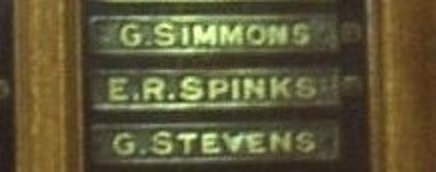
Horse Shoe Bend Roll of Honour. E R SPINKS
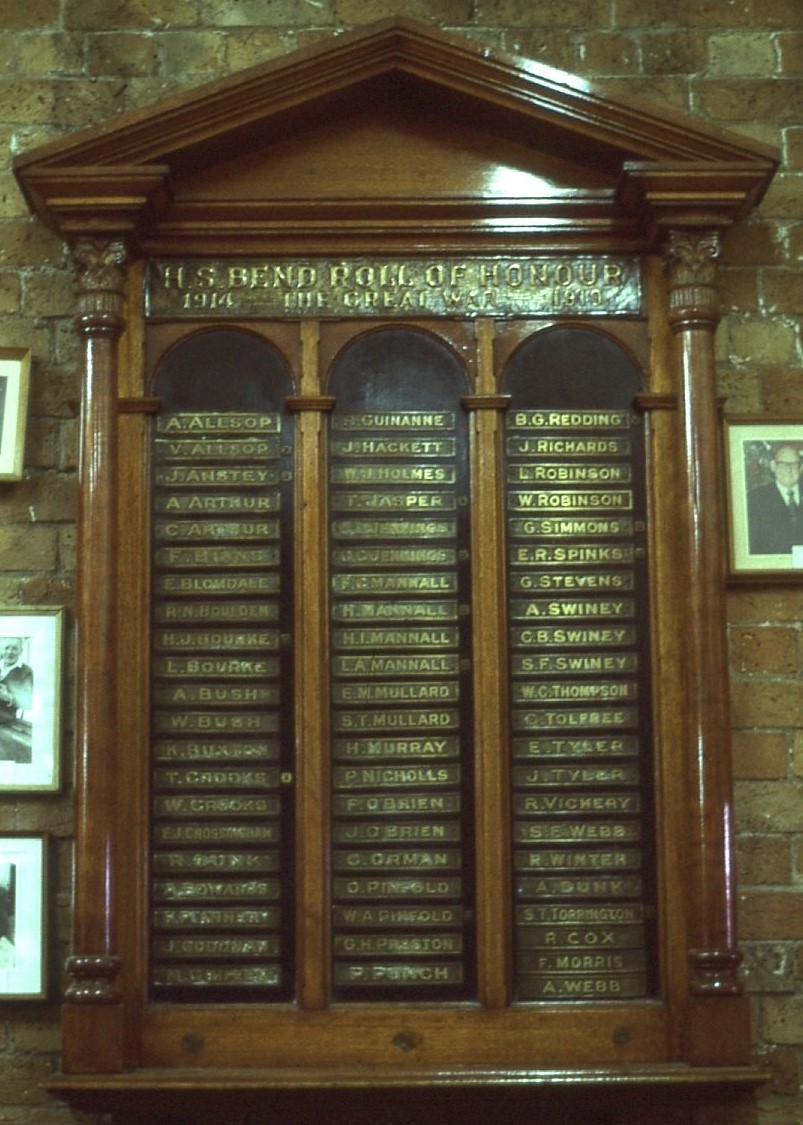
Horse Shoe Bend Roll of Honour.
Edward "Robert's" Horse Shoe Bend Medal was acquired in January 2019 and is now in the Harrower Collection. This is only the second medal I have seen in over 25 years of researching and collecting.
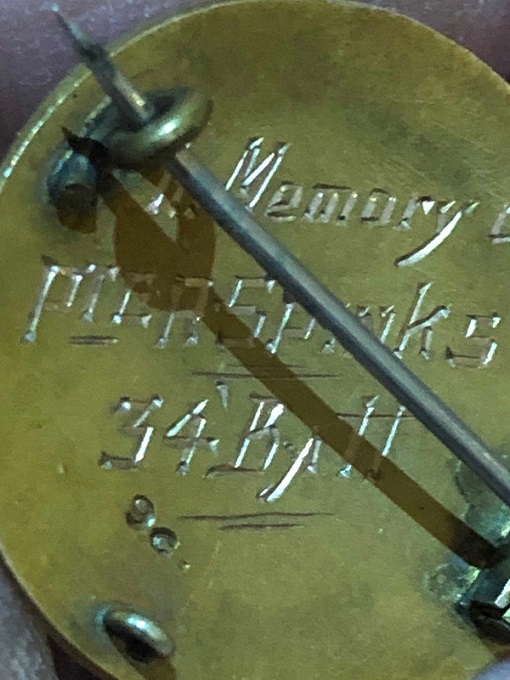
34th Battalion "Maitlands Own " . Approx 25 mm in diameter. Approx 4 to 5 grams in weight. 9 Carat gold. Pte. R. SPINKS 34 Batt.
Robert's "His Duty Done" Medal was acquired in January 2019 and is now in the Harrower Collection. This badge is the third I have ever seen as a collector. This badge belong was sold to me as belonging to Private: 2159 Robert Edward James SPINKS but after investigation I can confirm that it is attributed to Private: 192 Edward Rolfe "Robert" SPINKS. 34th Battalion AIF who was Killed in Action on the 9th June 1917. He lived at Horse Shoe Bend, hence the Horse Shoe Bend Medal that was issued by the Horse Shoe Bend Welcome Home Committee.
THE PRESENTATIONS
“Before the medals were presented, Mr. C.J. Mannall (chairman) said the Horseshoe Bend Welcome Home Committee had been giving a welcome home to all the Horseshoe Bend heroes who had returned, and these welcomes would never be forgotten. “He thought it a pity that similar welcome homes had not been given to other soldiers of the Maitland area. “But the Horseshoe Bend committee decided that the returned men should have something given to them to commemorate the heroic part they had played in the war and decided to present each man with a gold medal. “These medals were very unique. “ Each had a horseshoe in the center with the monogram of the recipient, the name of the returned soldier to whom it was presented, and an inscription stating by whom and what it was presented for and each was surmounted by a crown, and attached by a green ribbon to a gold pin for the purpose of attaching to the coat.”
(The HSB Honour Roll lists a H. and L.A. Mannall K.I.A.)
Horseshoe Bend Medal Recipients identified:
Authors Notes: Of the 64 names on the Horseshoe Bay Honour Board there were only 6 men who served with the 34th Battalion and only 1 man who's medal was engraved "In Memory Of". That was to PTE E.R. SPINKS 34 Batt which was acquired in January 2019 and is now in the Harrower Collection.
Family Information
Edward Rolfe "Robert" Spinks was a single 29 year old Painter from 20 Bella Street, Horse Shoe Bend via West Maitland upon enlistment with the AIF. His parents George and Emily Spinks were married in 1886 at Horse Shoe Bend, West Maitland. Marriage Cert: 5913/1886.
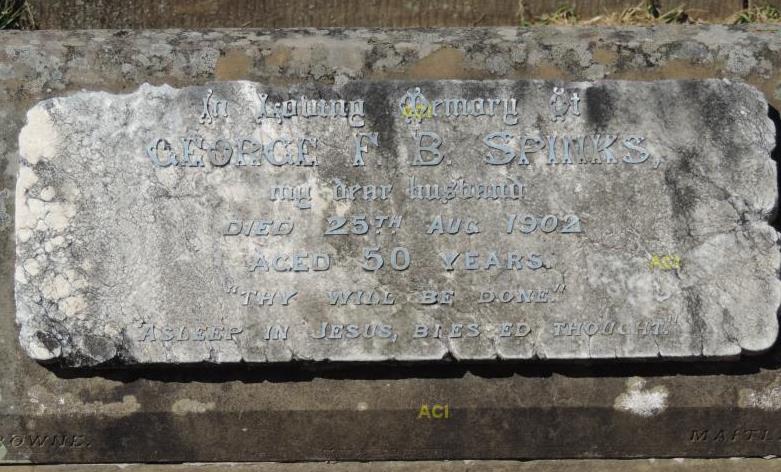
George Spinks. (1851-1902) Campbell's Hill Cemetery, West Maitland, New South Wales.
George was buried on the 26th August 1902.
Maitland and District Historical Society Inc. Bulletin: Vol. 22, no.1, February 2015 7
The Horseshoe Bend Medal of World War 1
The Horseshoe Bend is a unique area of Maitland, so named because it lay within the horseshoe shape bend of the Hunter River and had, possibly, the first subdivision of our city when in the early
1840’s James King divided up his grant. * Over the years the Bend people grew into a very tight knit community with strong family and friendship ties, a self-reliant group and very protective of their own. This was never shown better than in how the Bend people acknowledged the sacrifices of their men when they returned from the horrors of WW1. They formed a Welcome Home Committee and each returned soldier was presented with an especially commissioned gold medal with a horseshoe in the center.
I had known of these medals for some time but thanks to the recent article in the Maitland Mercury (Alan Hardie’s “WW1 Memorabilia Wanted”, 5th August 2014) I was privileged and honoured to hold one of these historic WW1 medals in my hand, a medal given by the people of Horseshoe Bend to a soldier of the 34th Battalion, “Maitland’s Own”, who had fought on the battle fields of the Western Front.
When The Maitland Mercury and Hunter River General Advertiser moved its office to the corner of High and Hunter streets in 1857 it became part of the Bend, employed many of its people and reported all its news. So the Mercury files give a great description of that iconic medal and the stories that go with it.
THE PRESENTATIONS
“Before the medals were presented, Mr. C. J. Mannall (chairman) said the Horseshoe Bend Welcome Home Committee had been giving a welcome home to all the Horseshoe Bend heroes who had
returned, and these welcomes would never be forgotten. He thought it a pity that similar welcome homes had not been given to other soldiers of the Maitland area. But the Horseshoe Bend
Committee decided that the returned men should have something given to them to commemorate the heroic part they had played in the war and decided to present each man with a gold medal.
These medals were very unique. Each had a horseshoe in the centre with the monogram of the recipient, the name of the returned soldier to whom it was presented, and an inscription stating by
whom and what it was presented for and each was surmounted by a crown, and attached by a green ribbon to a gold pin for the purpose of attaching to the coat.” The Maitland Daily Mercury,
Tuesday 30 July 1918, page 6.
(The Horseshoe Bend Honour Roll lists a H. and L.A. Mannall K.I.A.)
One of the recipients of the medal was Private: 81 Reginald James HACKETT, 34th Battalion, who had his right arm amputated above the elbow after being wounded at Messines, June 7 1917. Less than two months after being awarded the medal he shot himself in the left temple with a revolver. He resided with Miss Soorley in Cohen Street Horseshoe Bend.
A medal to Major (Dr.) J. J. Hollywood, living in the “extended area” of H.S.B.
It is not known how many medals were commissioned but the Roll of Honour from the Horseshoe Bend Infants school lists the names of sixty four men, thirteen K.I.A, leaving fifty one to return home.
(Horseshoe Bend, Maitland. Cynthia Hunter, Maitland City Council, 2000)
Military Records
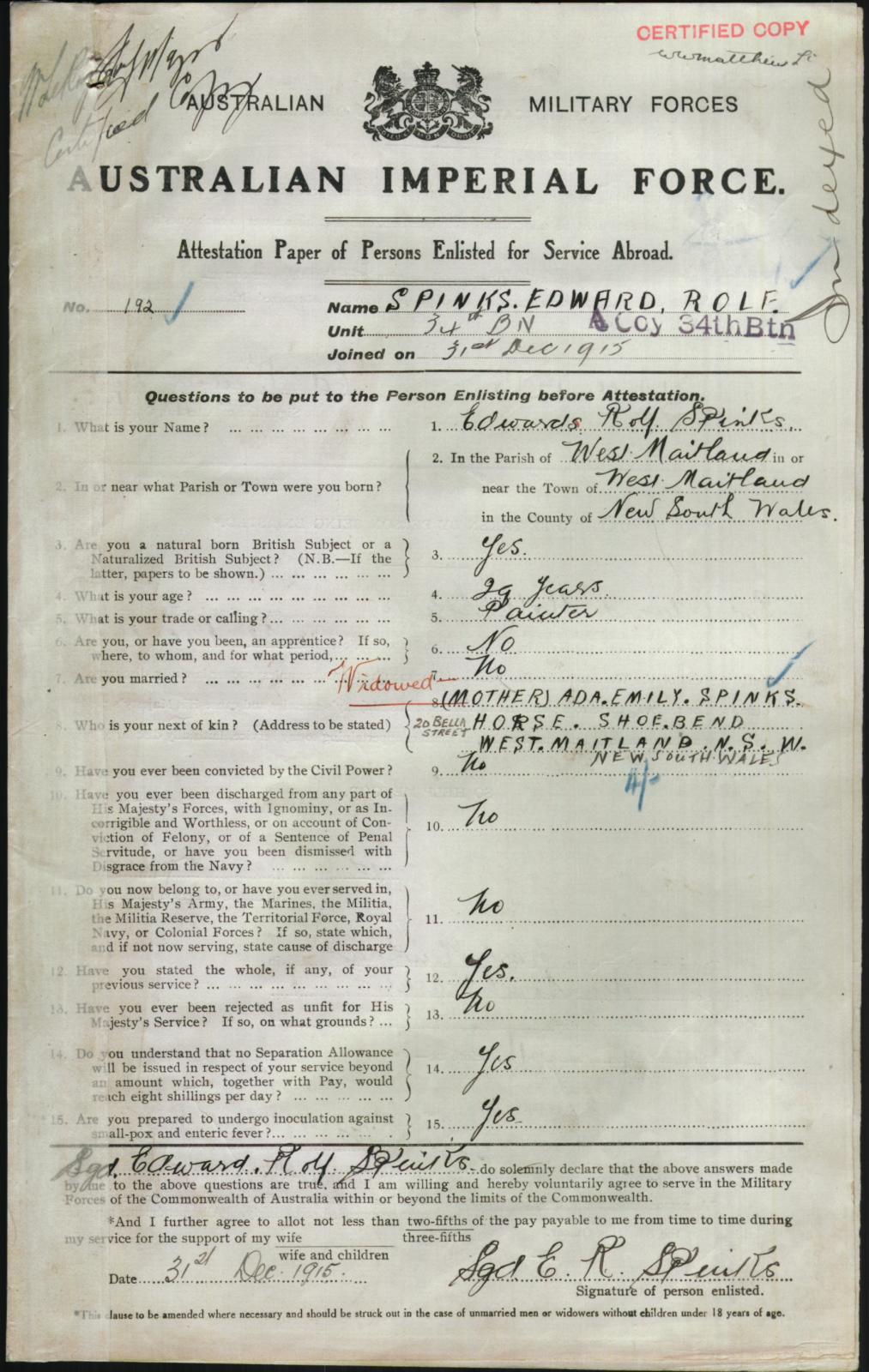
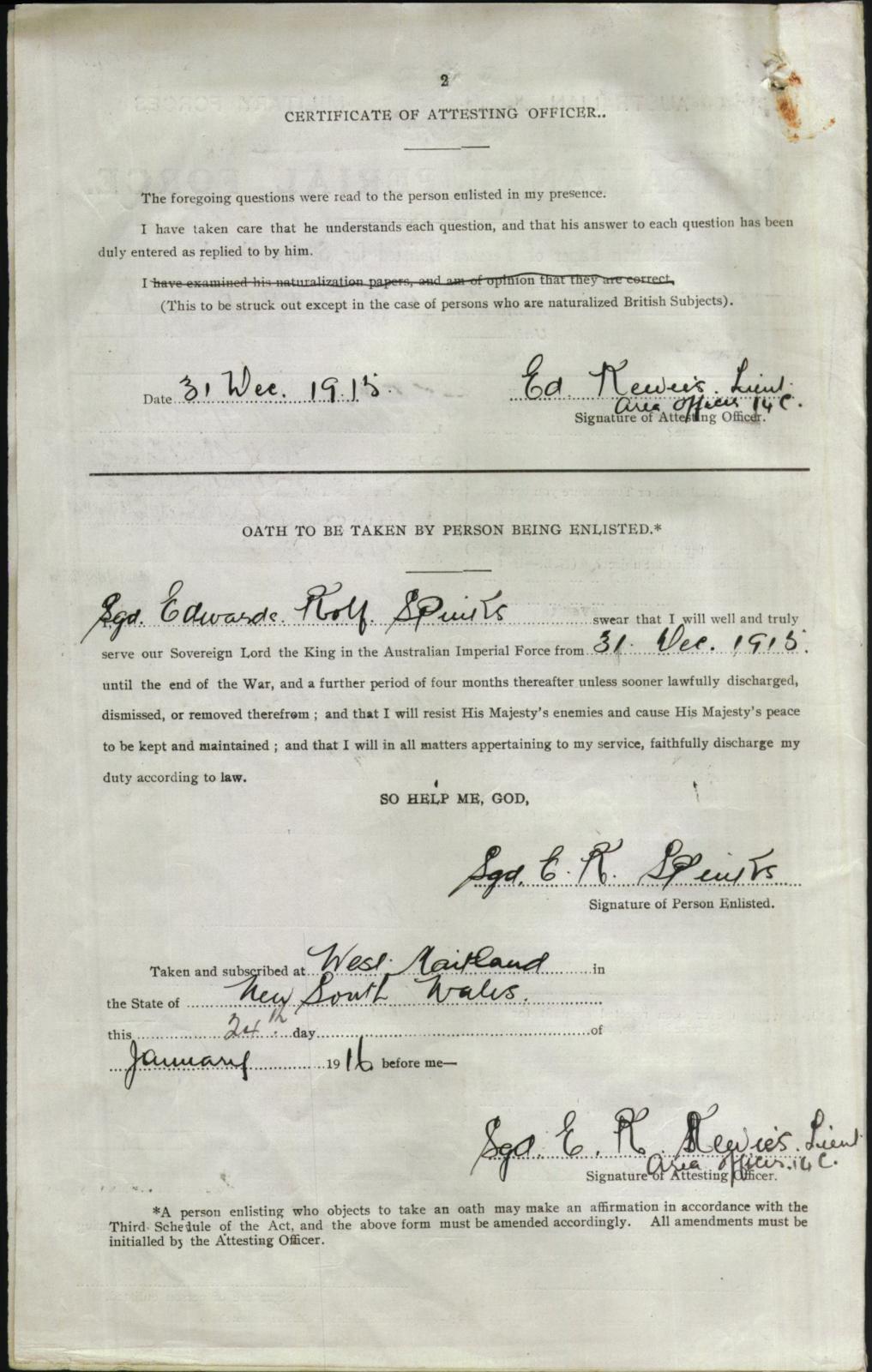
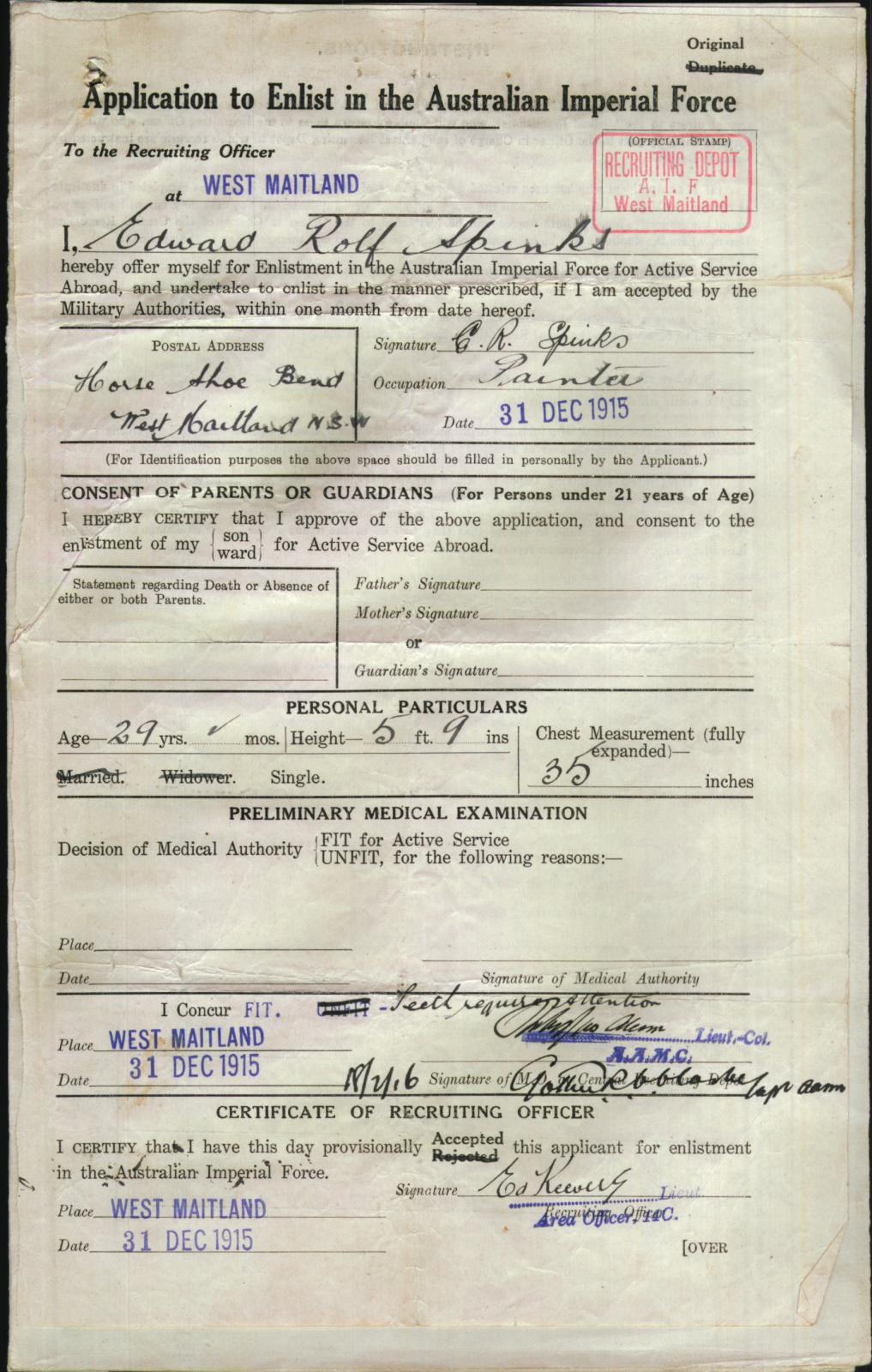
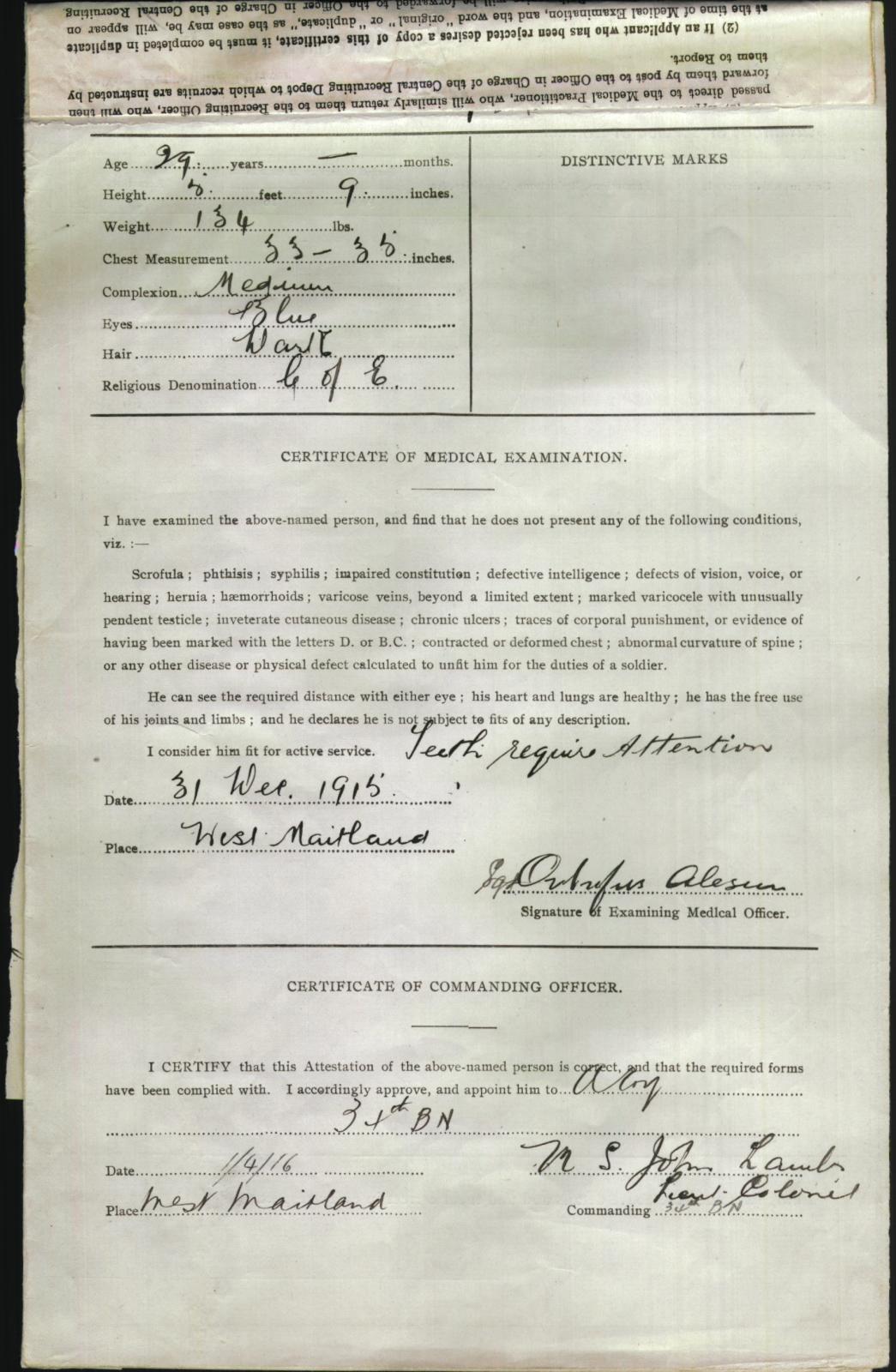
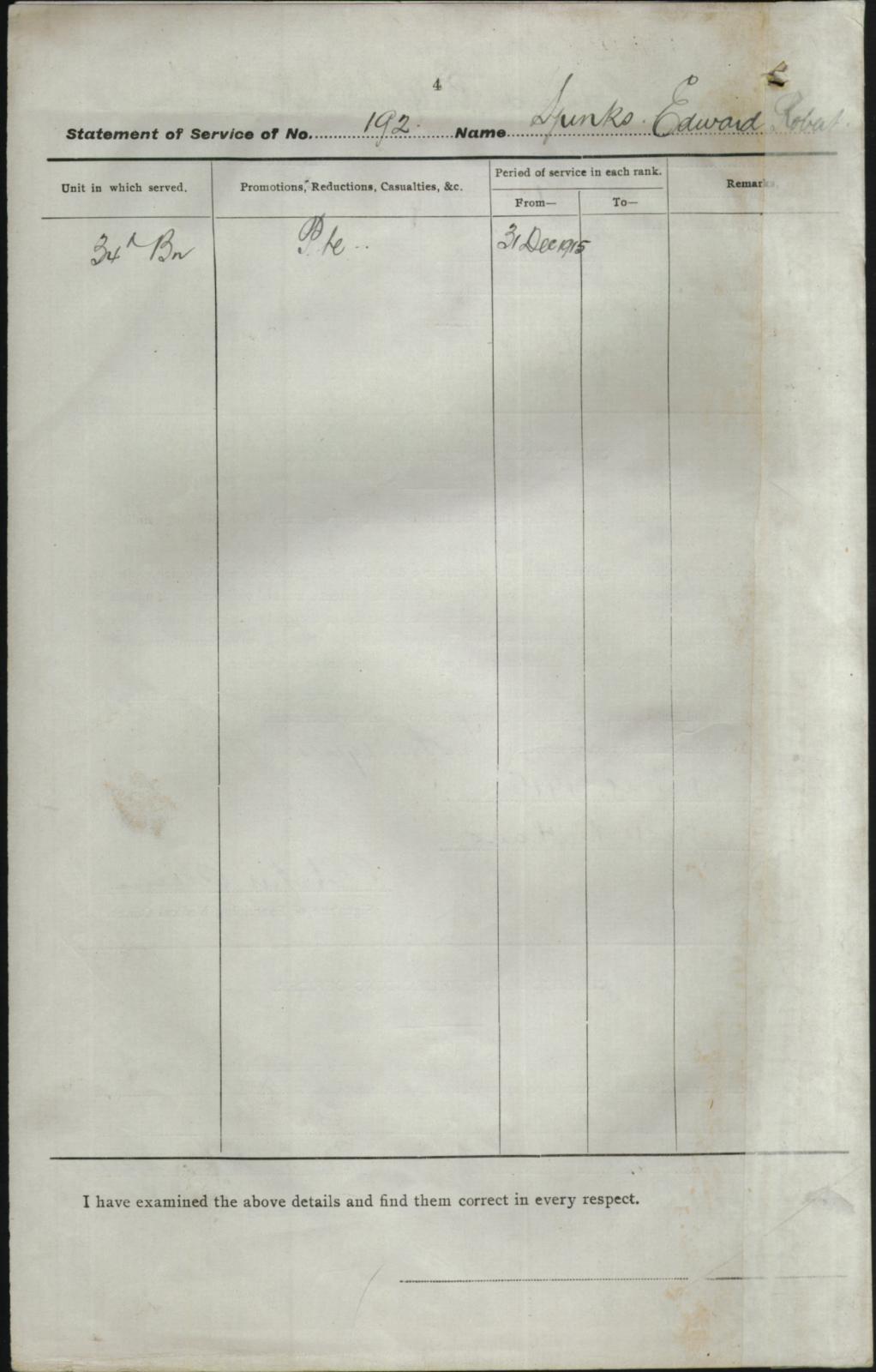
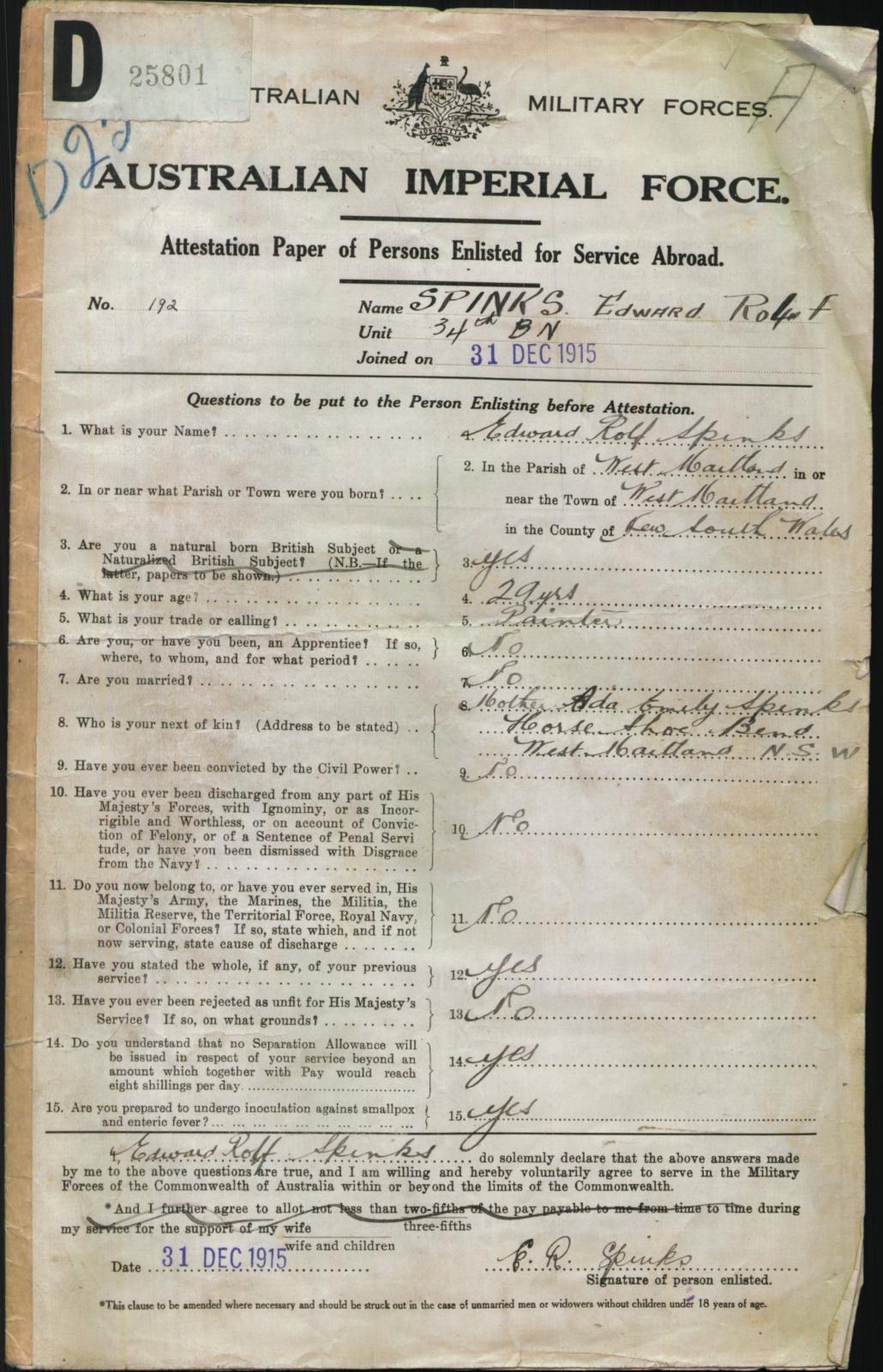
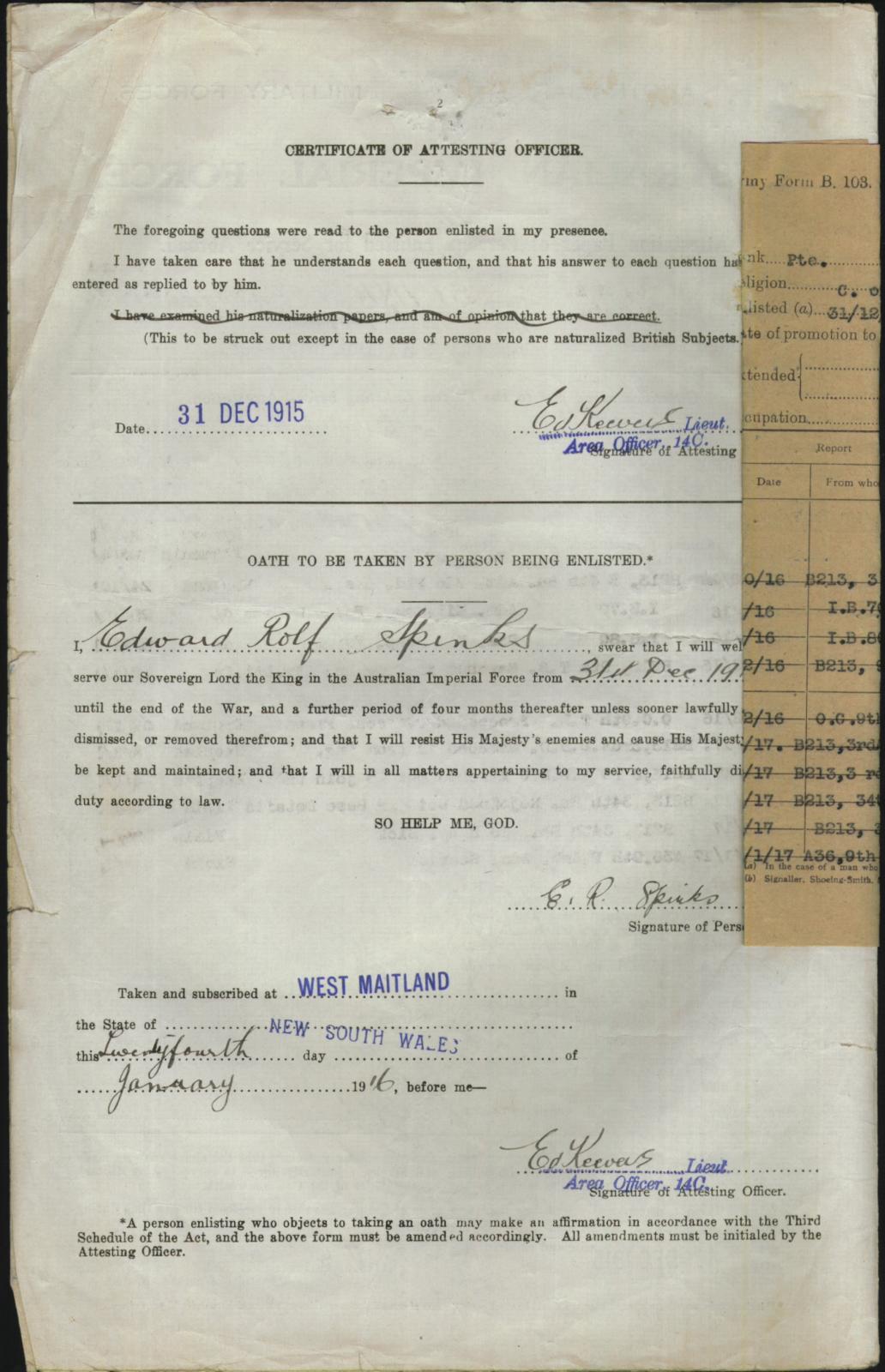
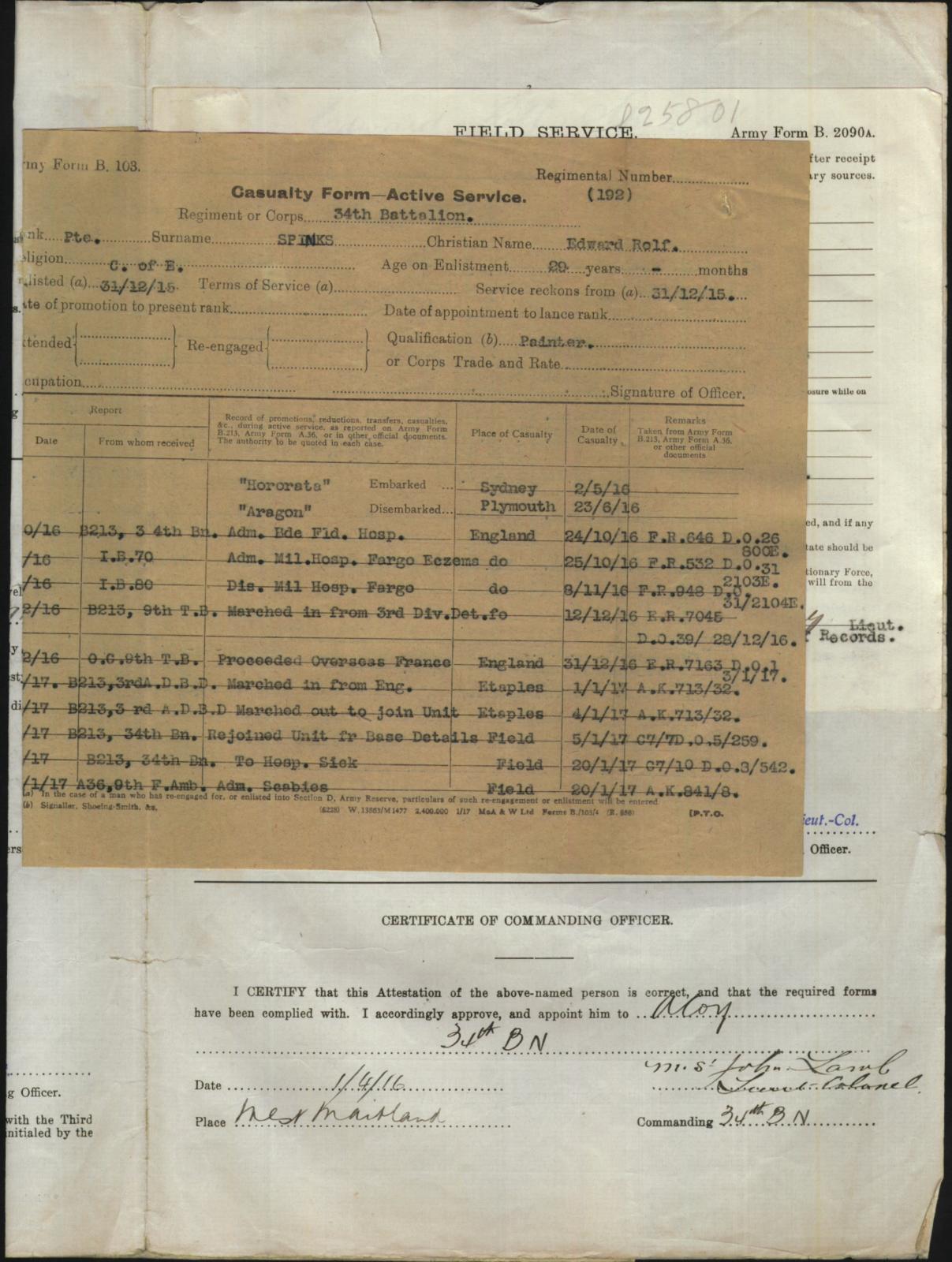

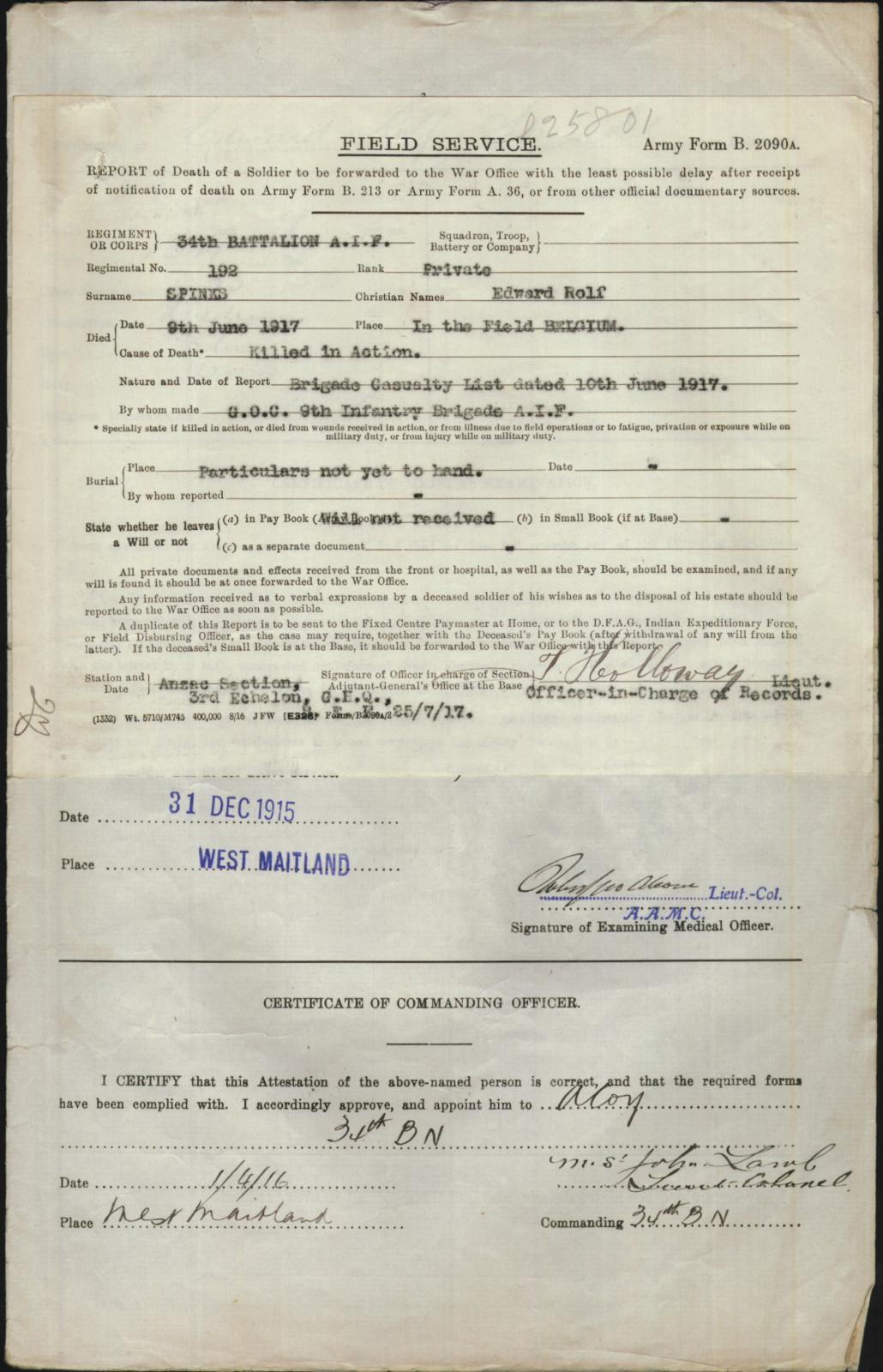

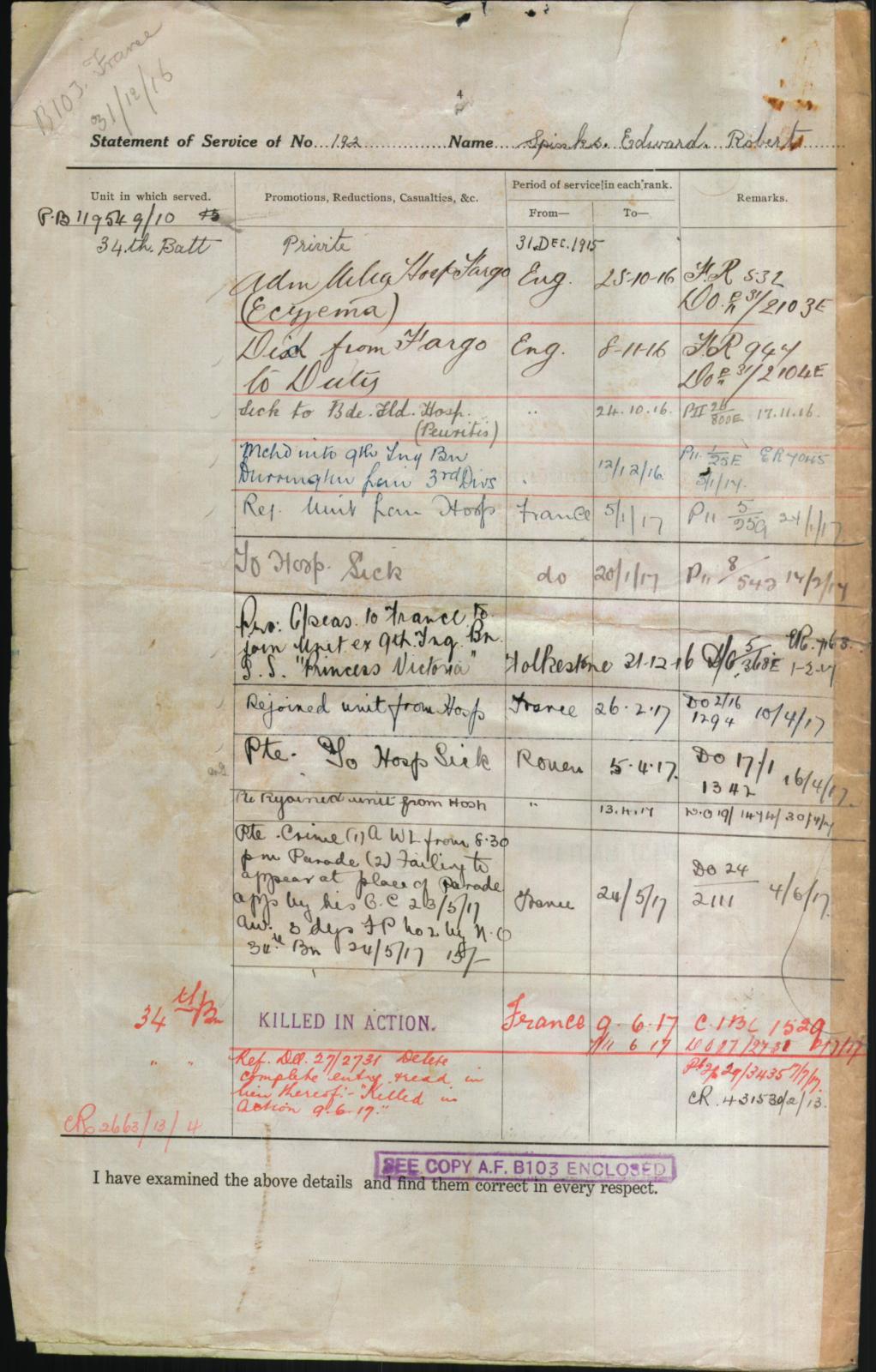
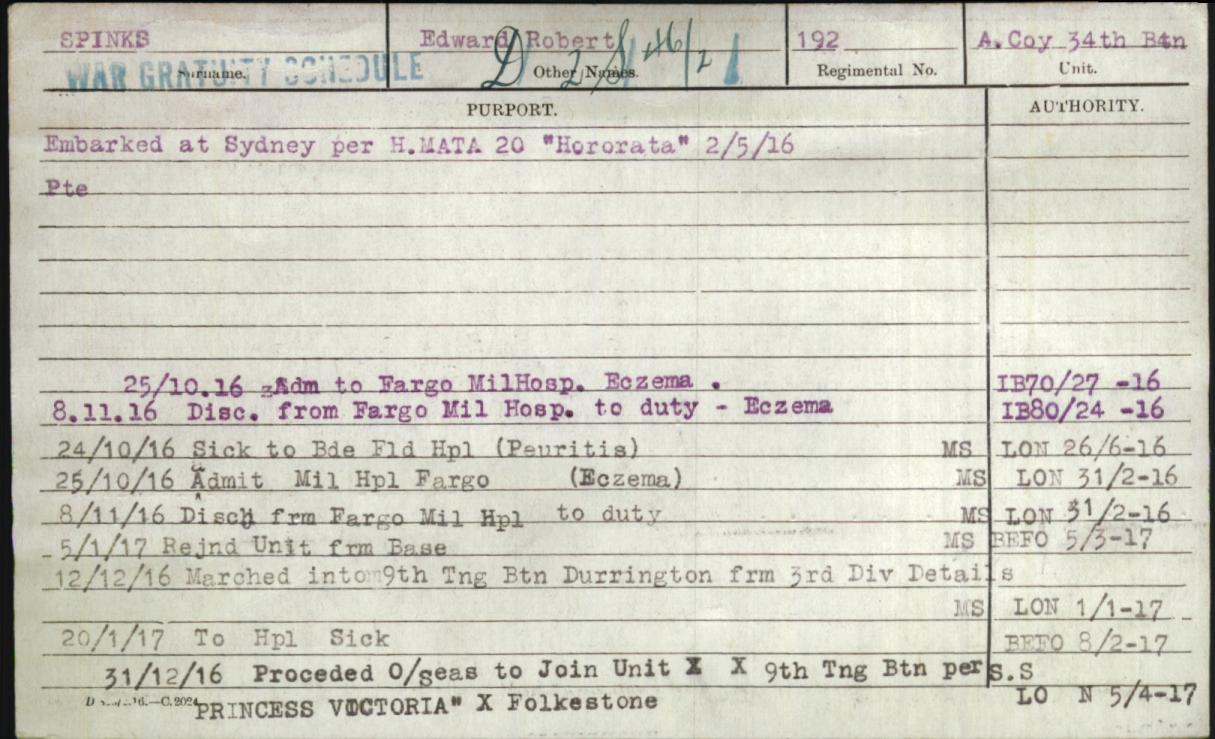
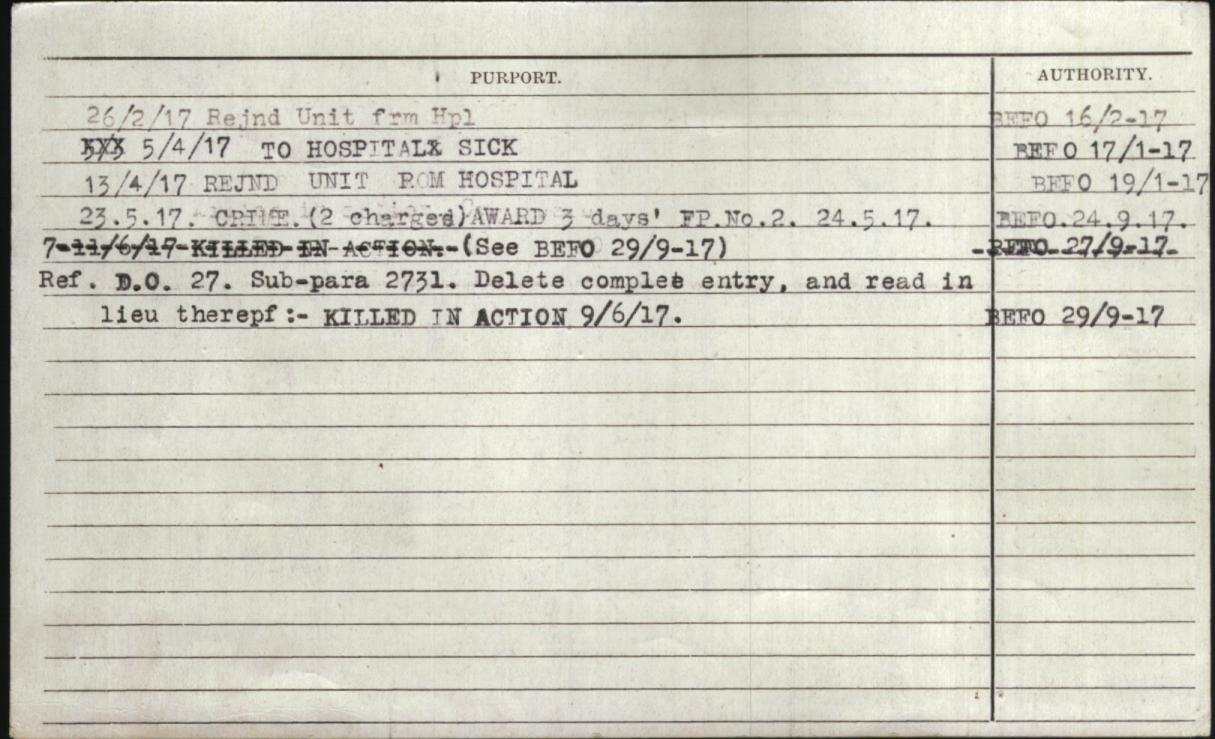
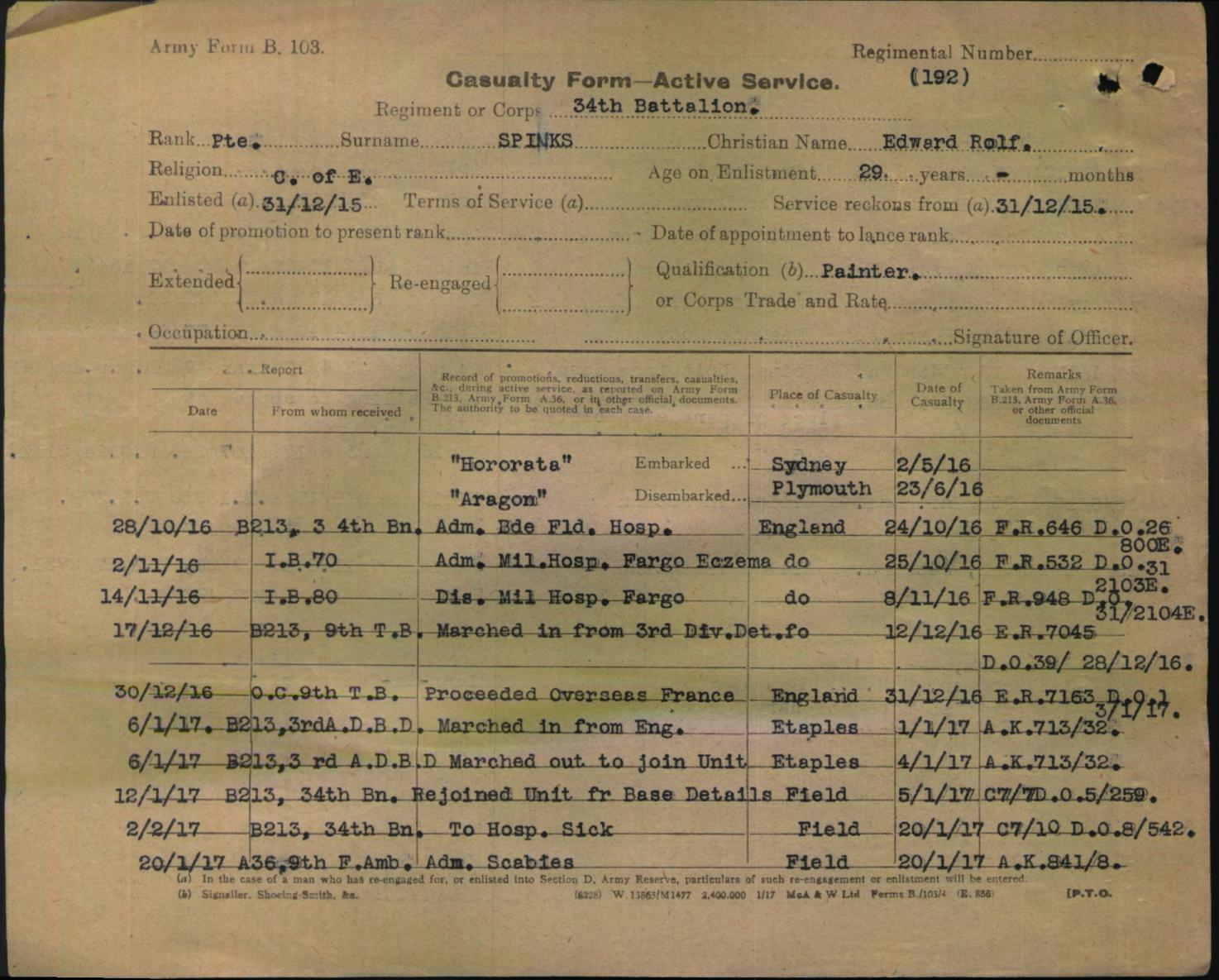
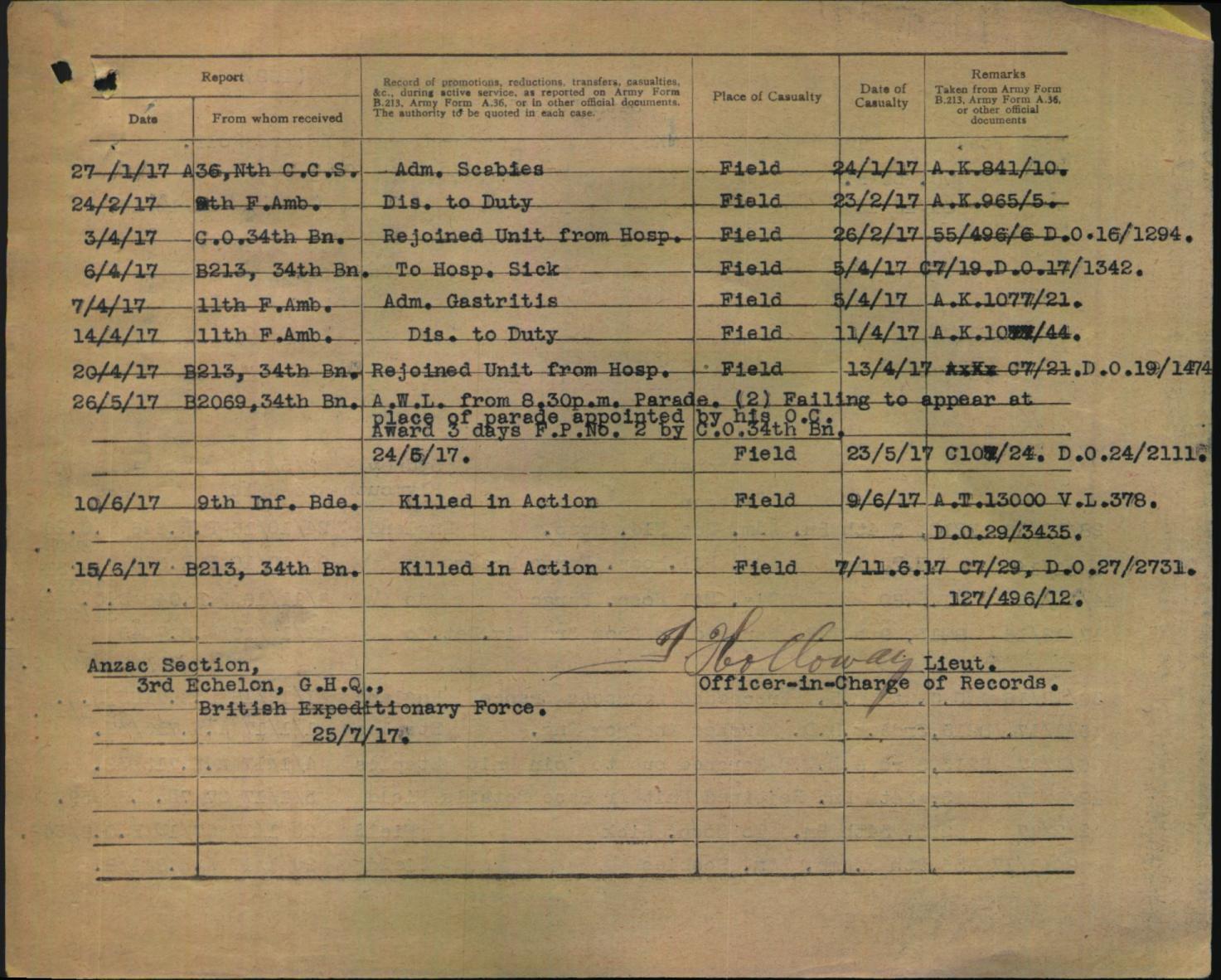

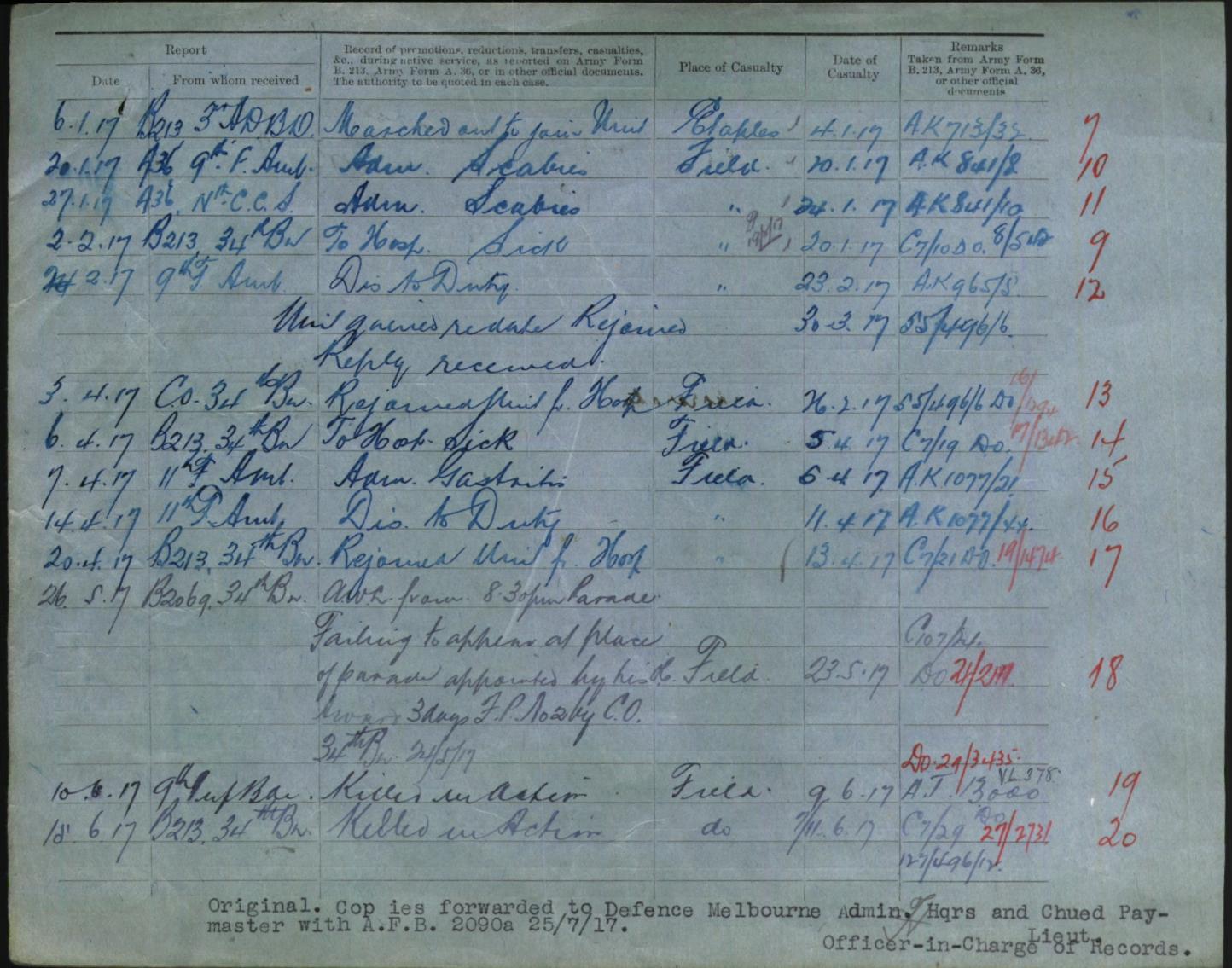
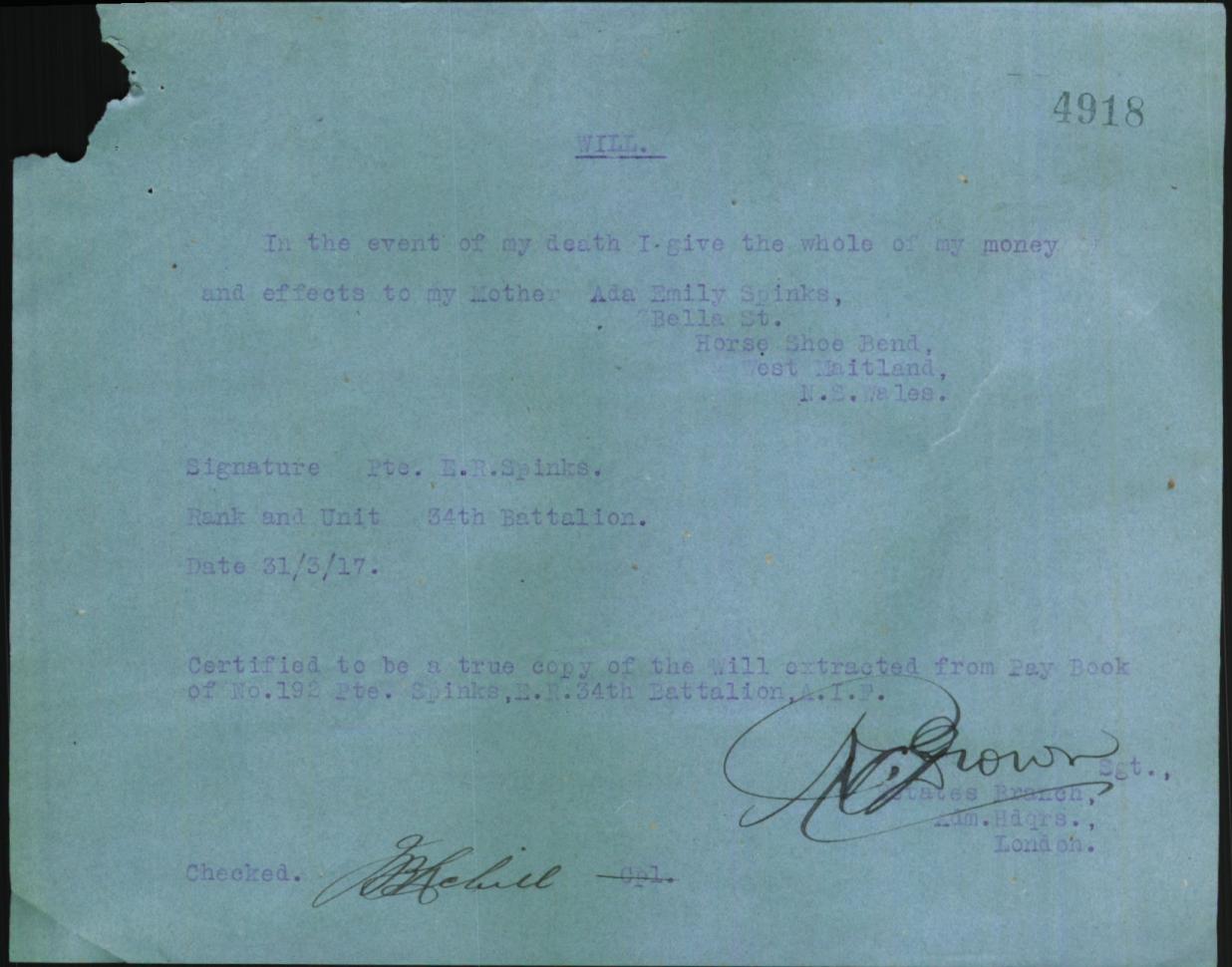

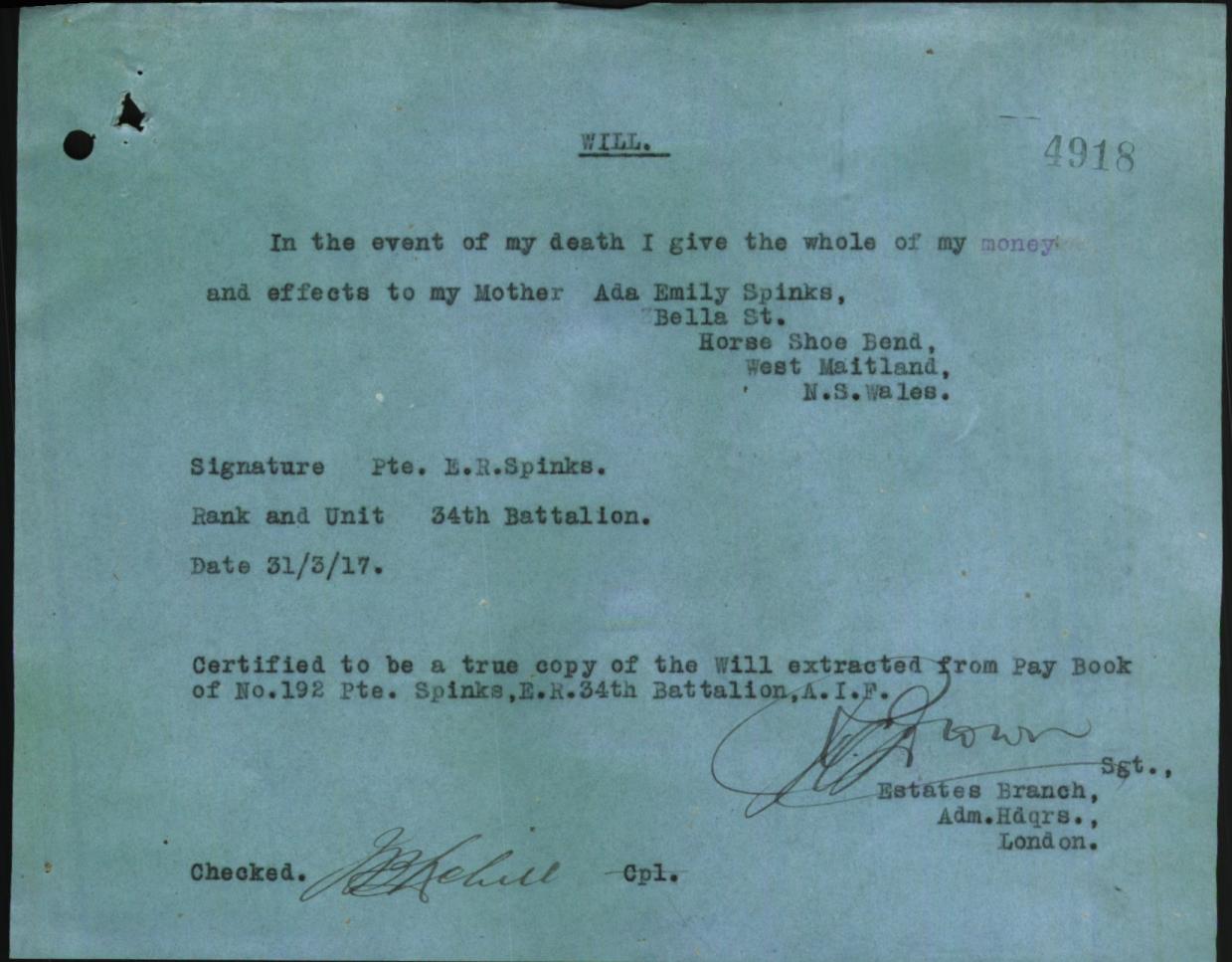

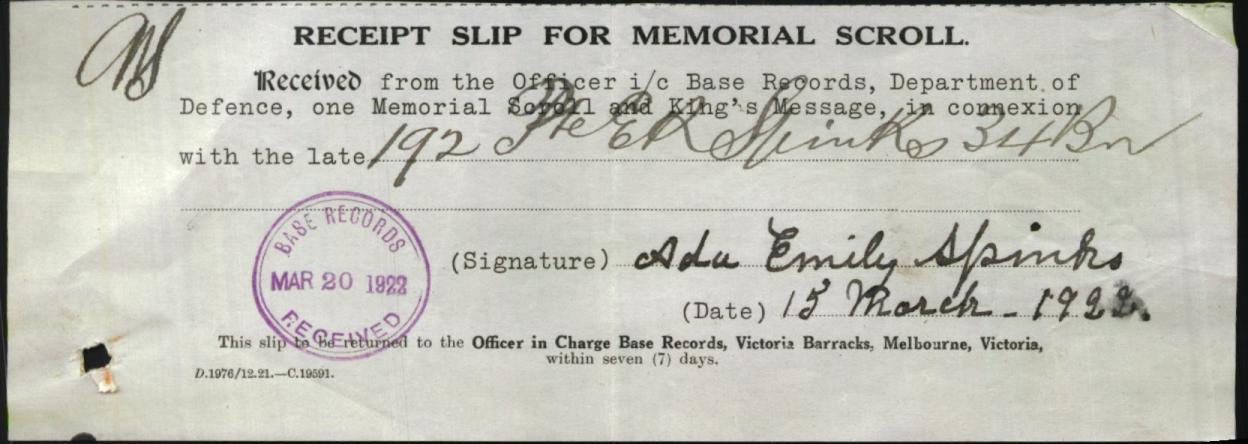

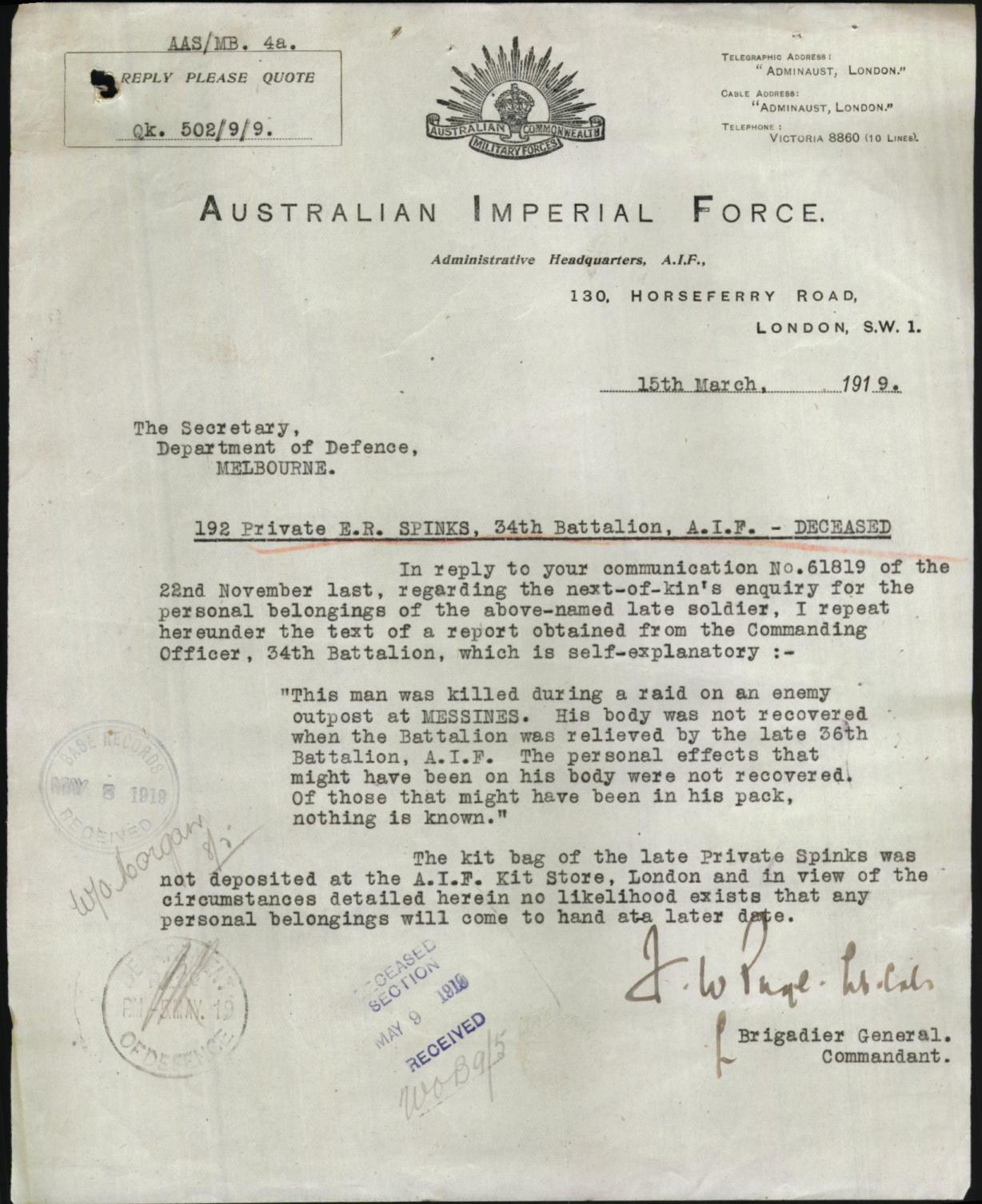
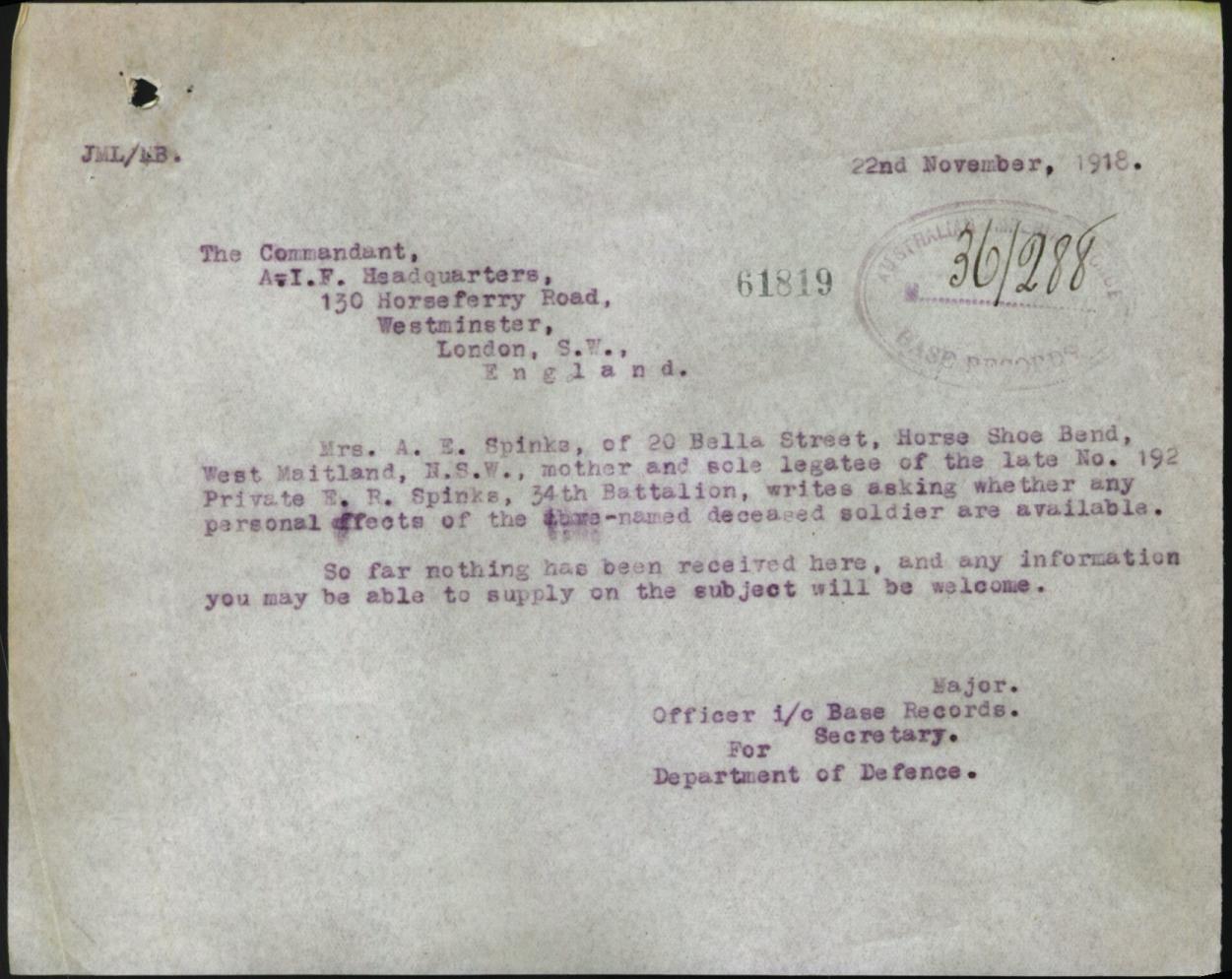

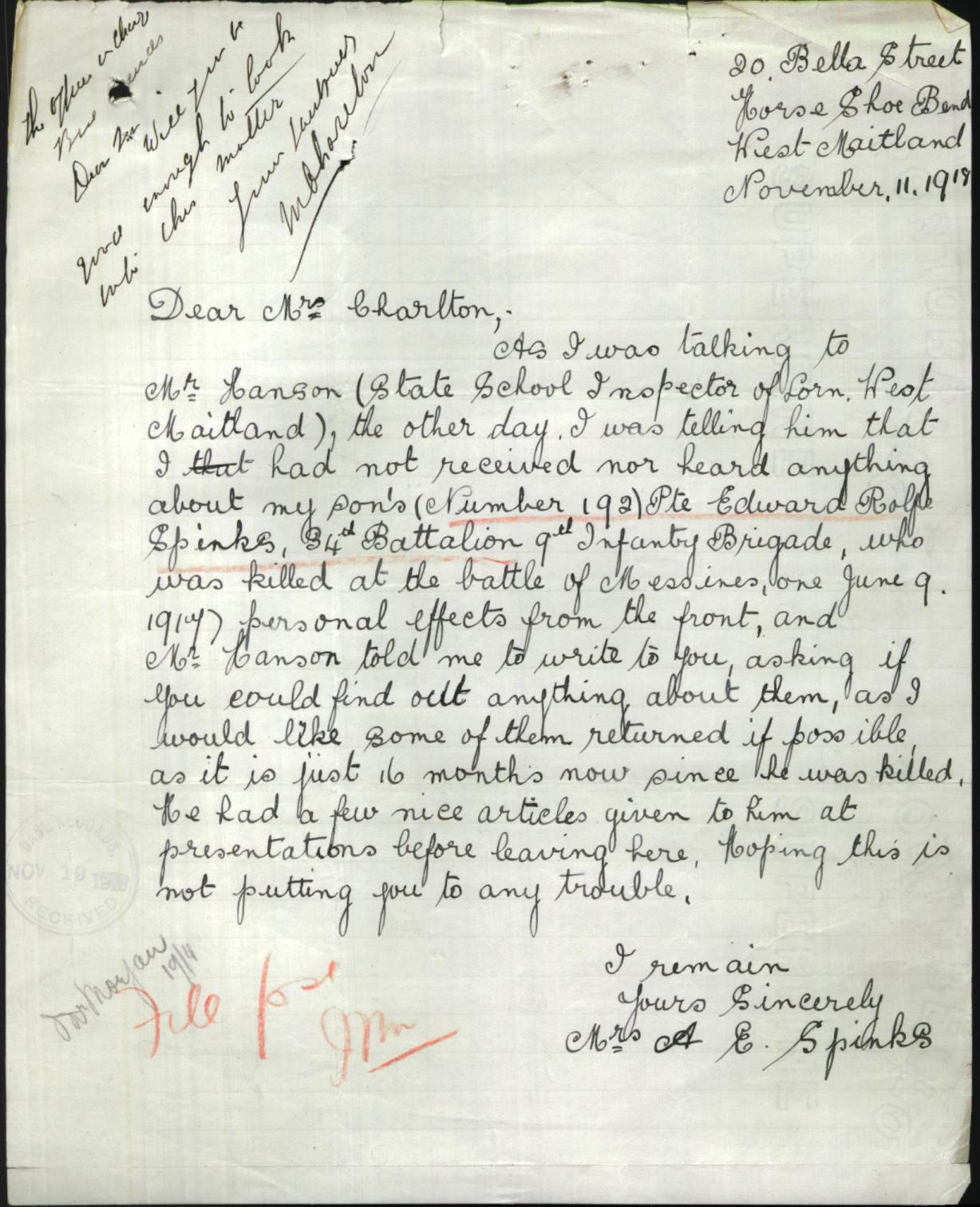

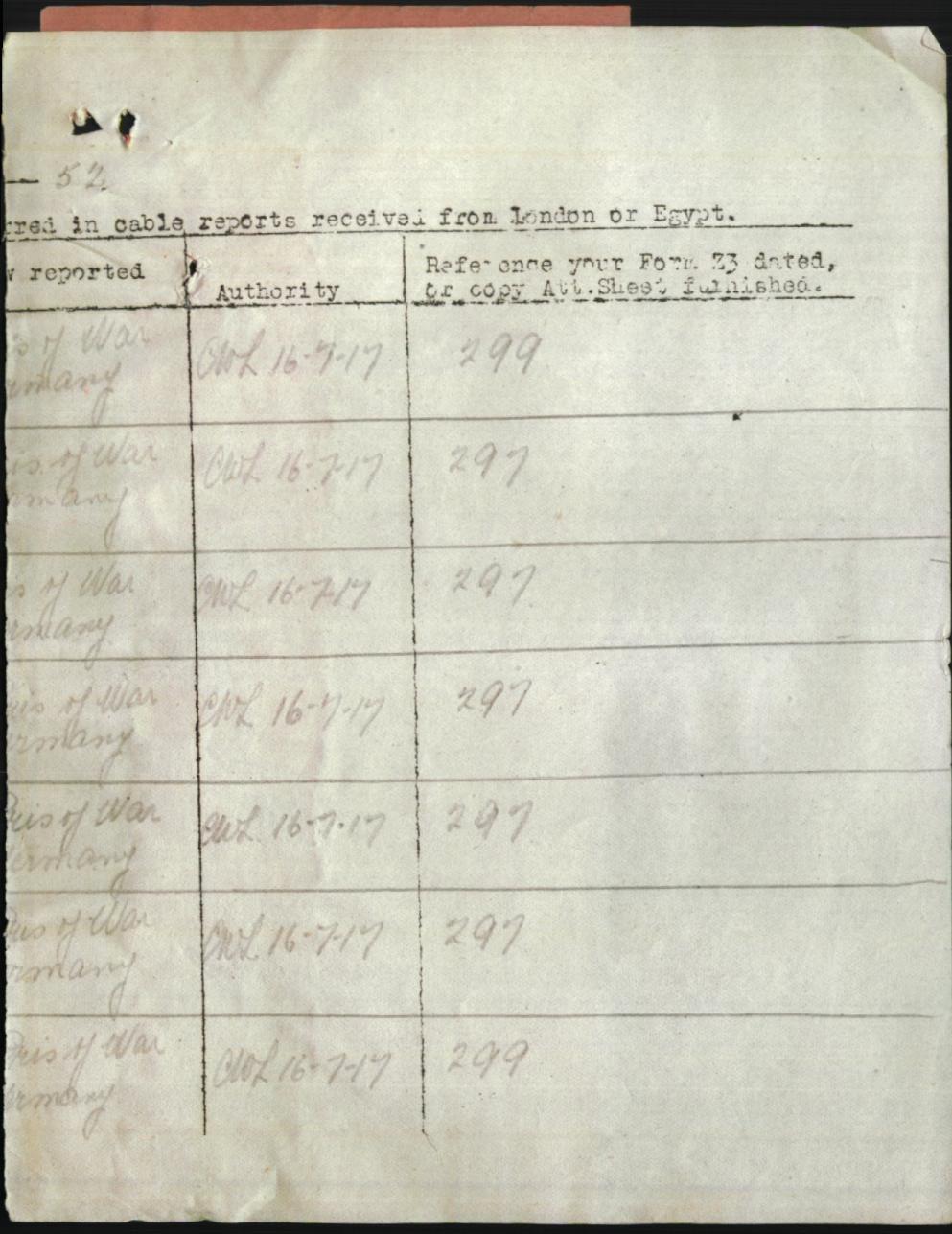
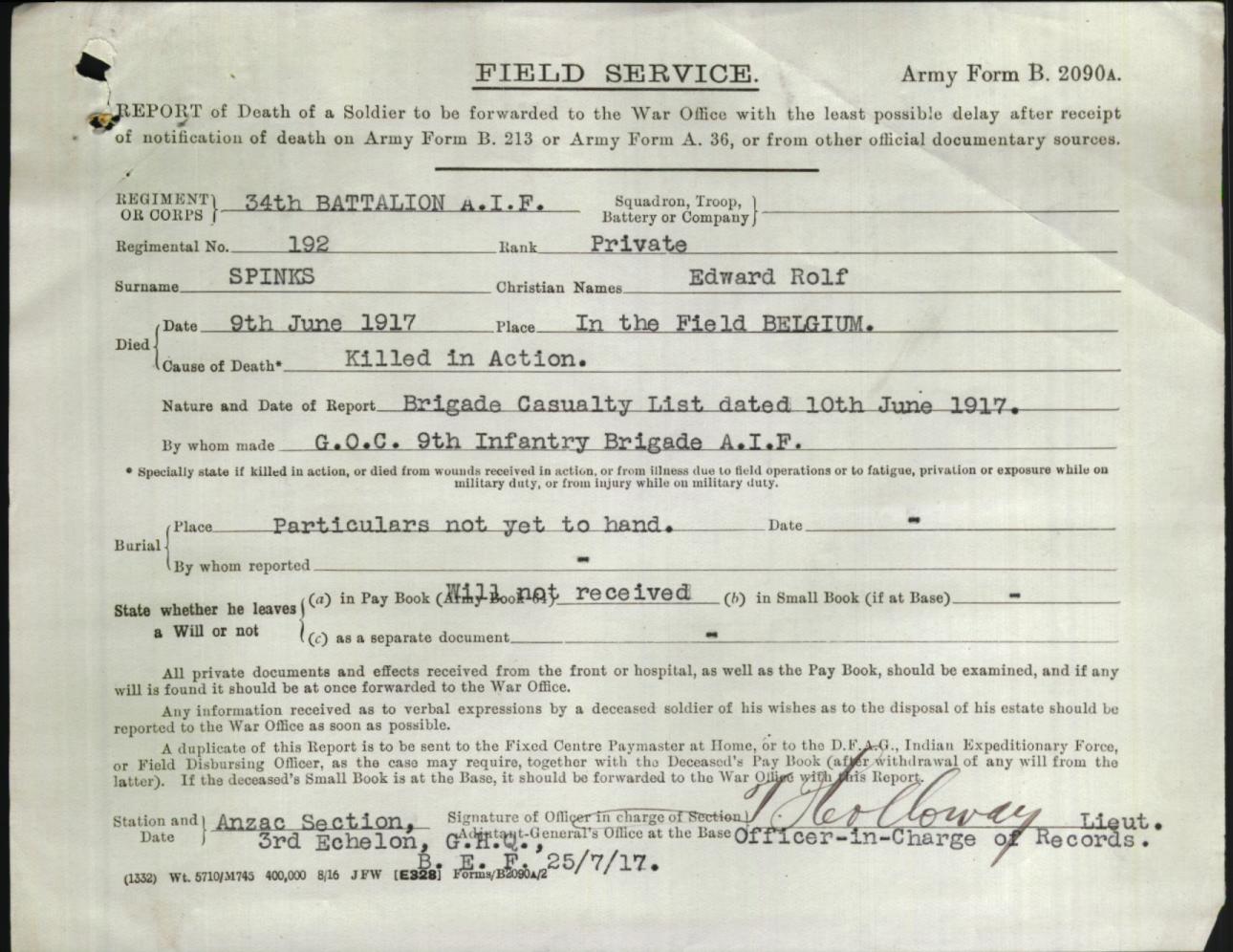
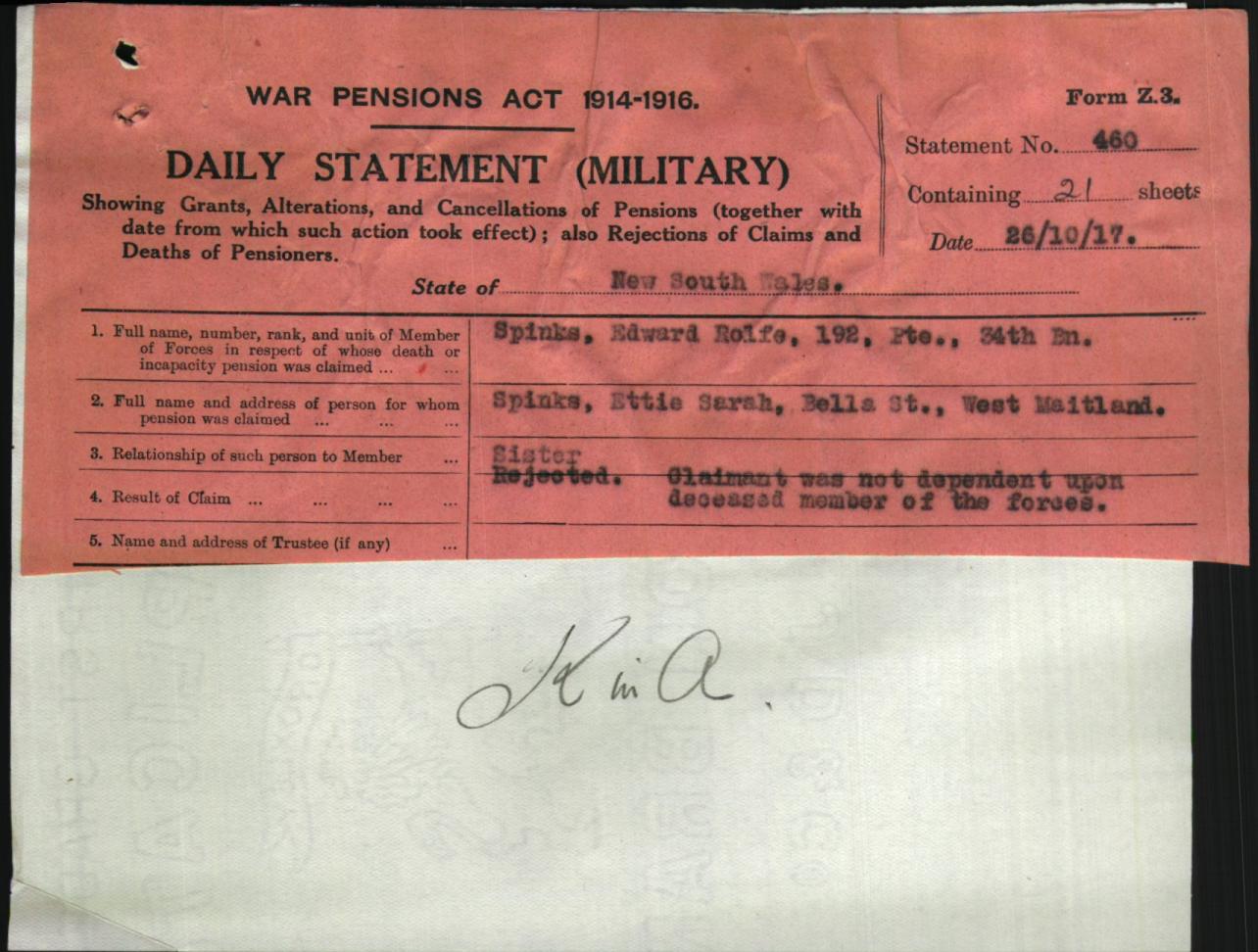
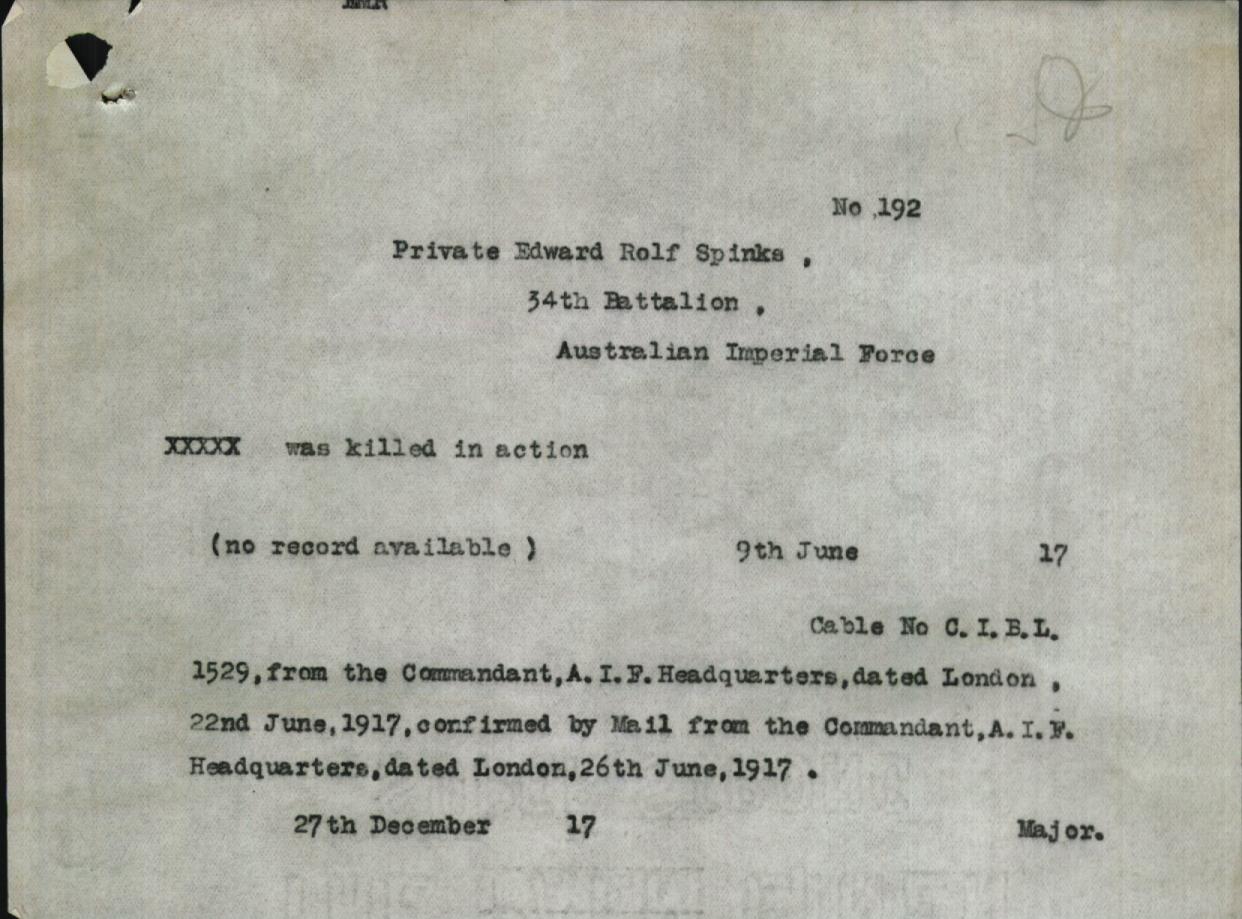
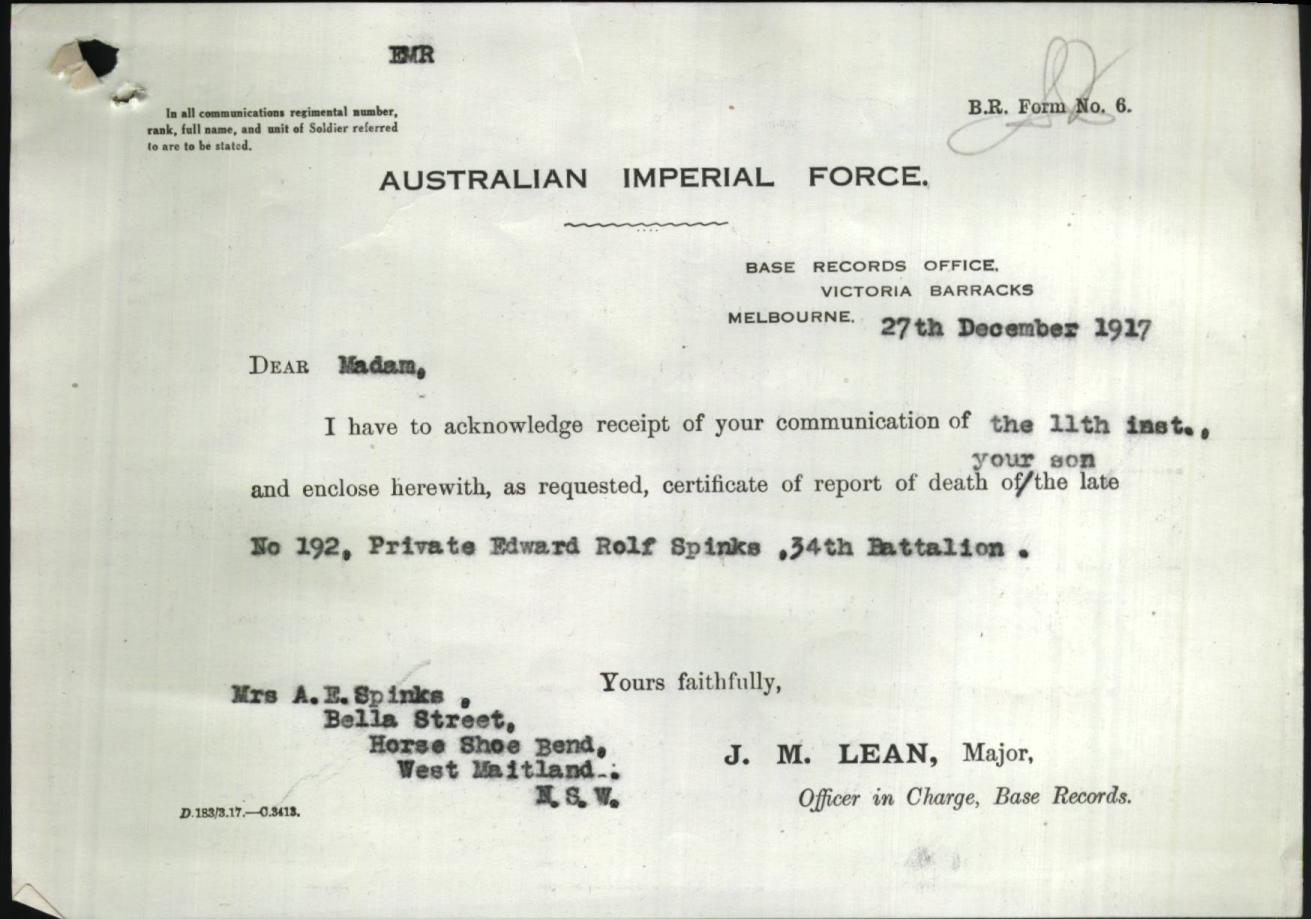
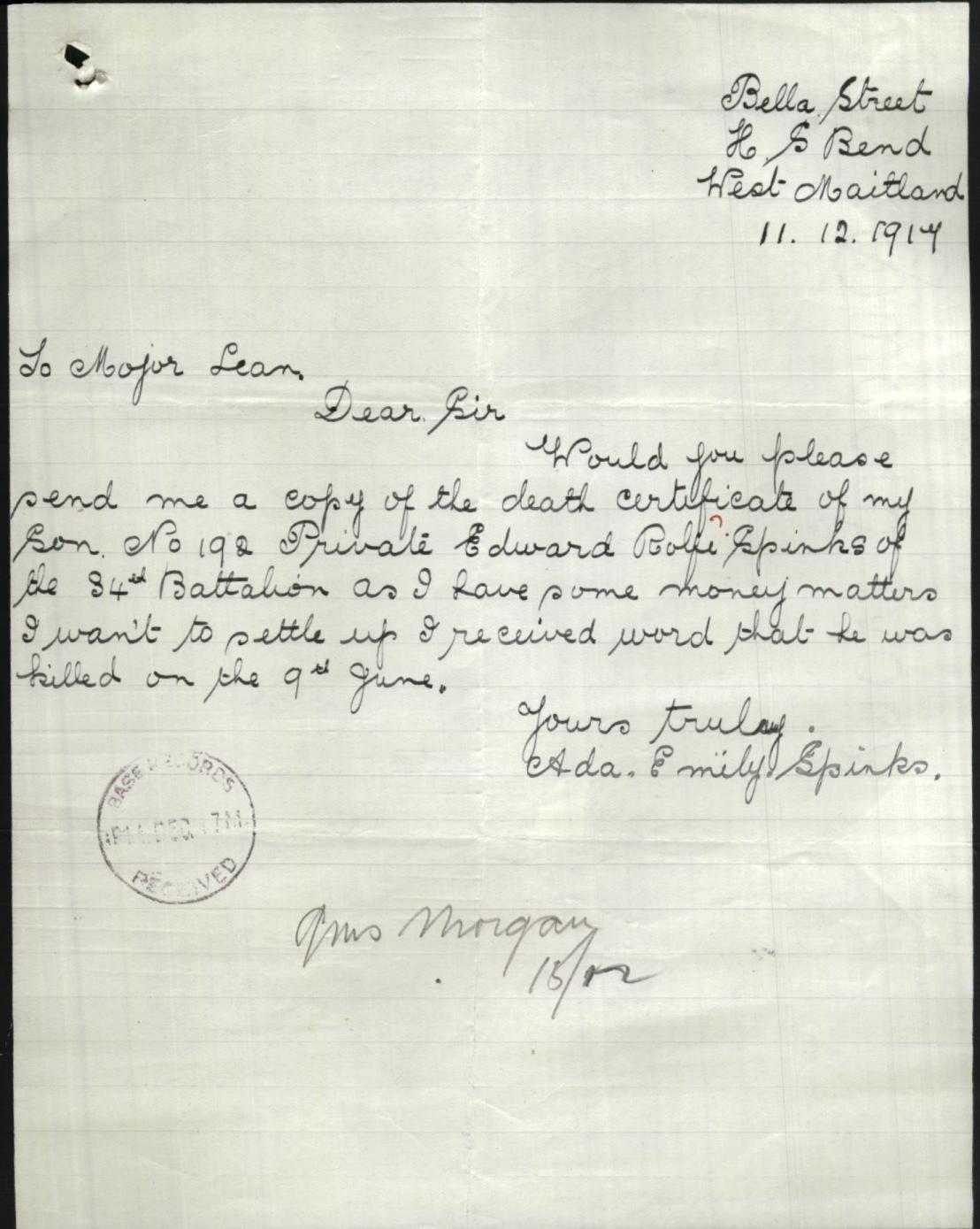
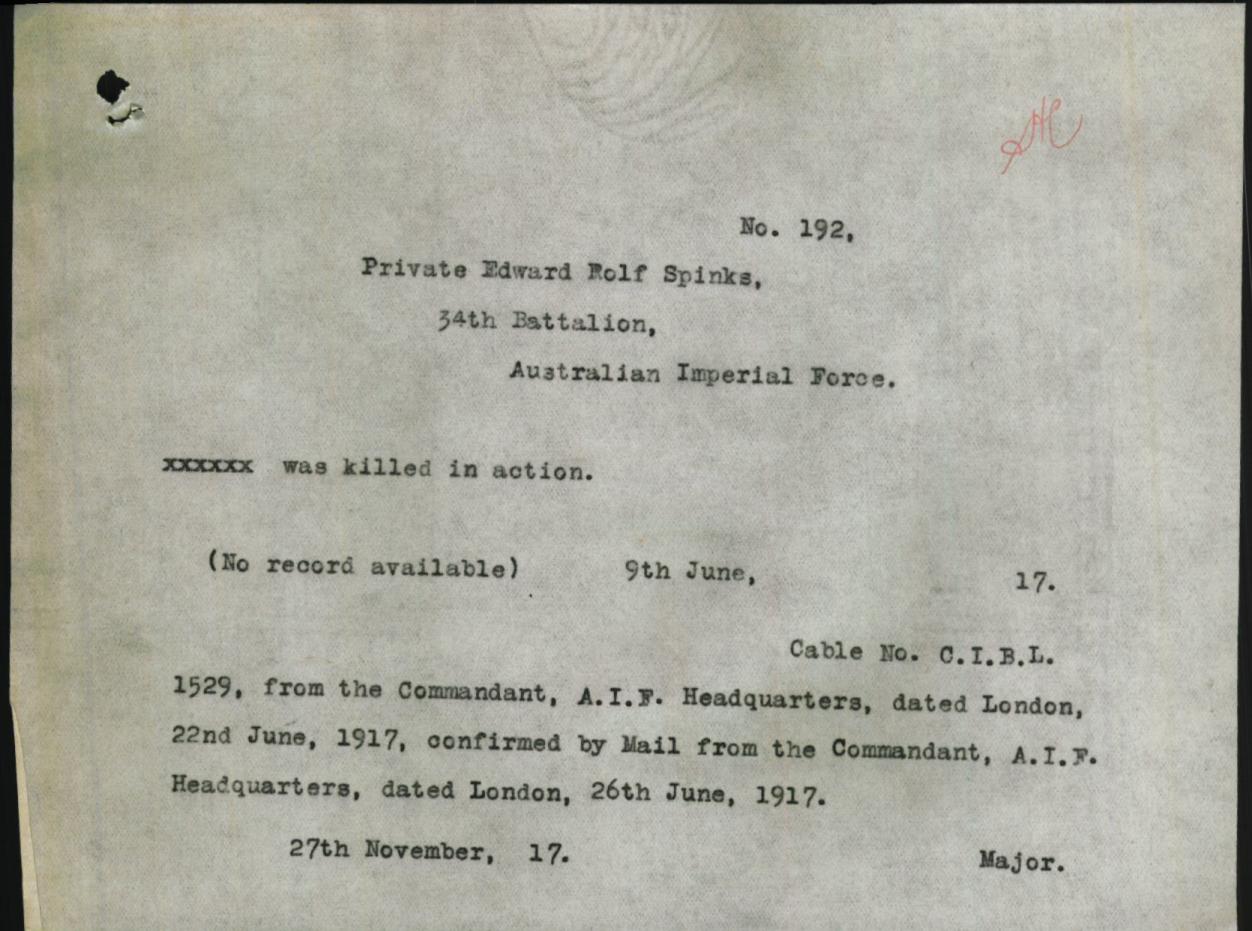
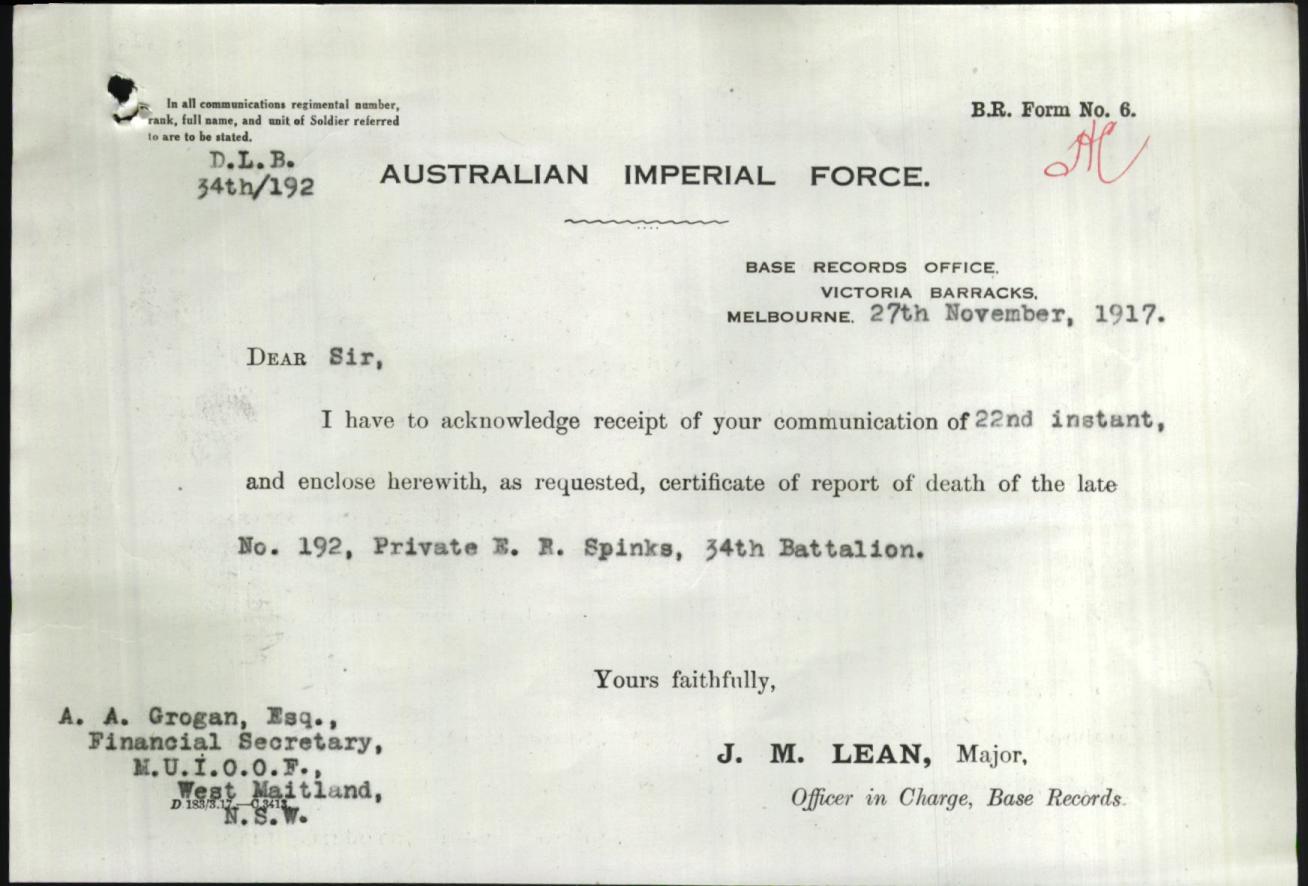
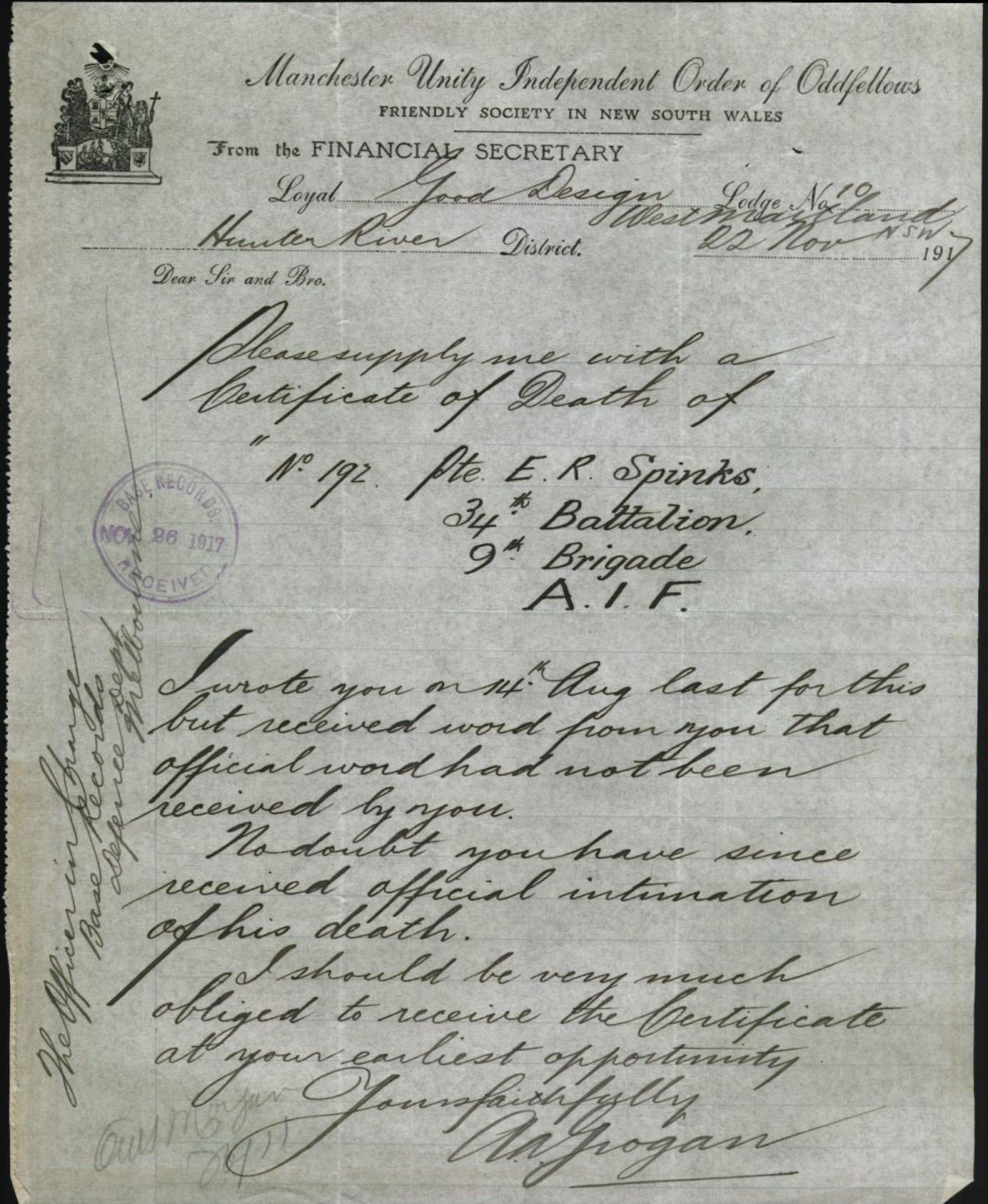
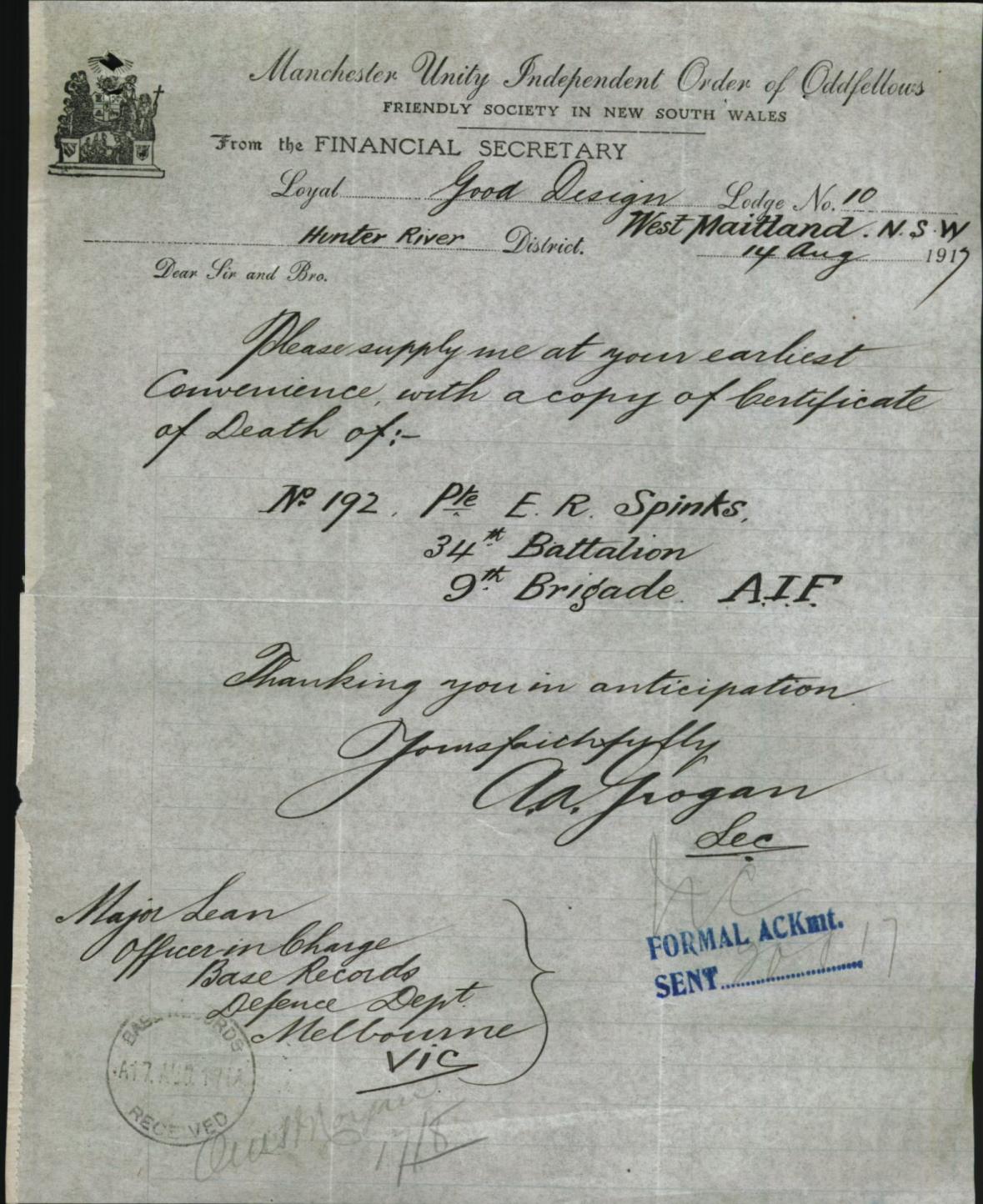

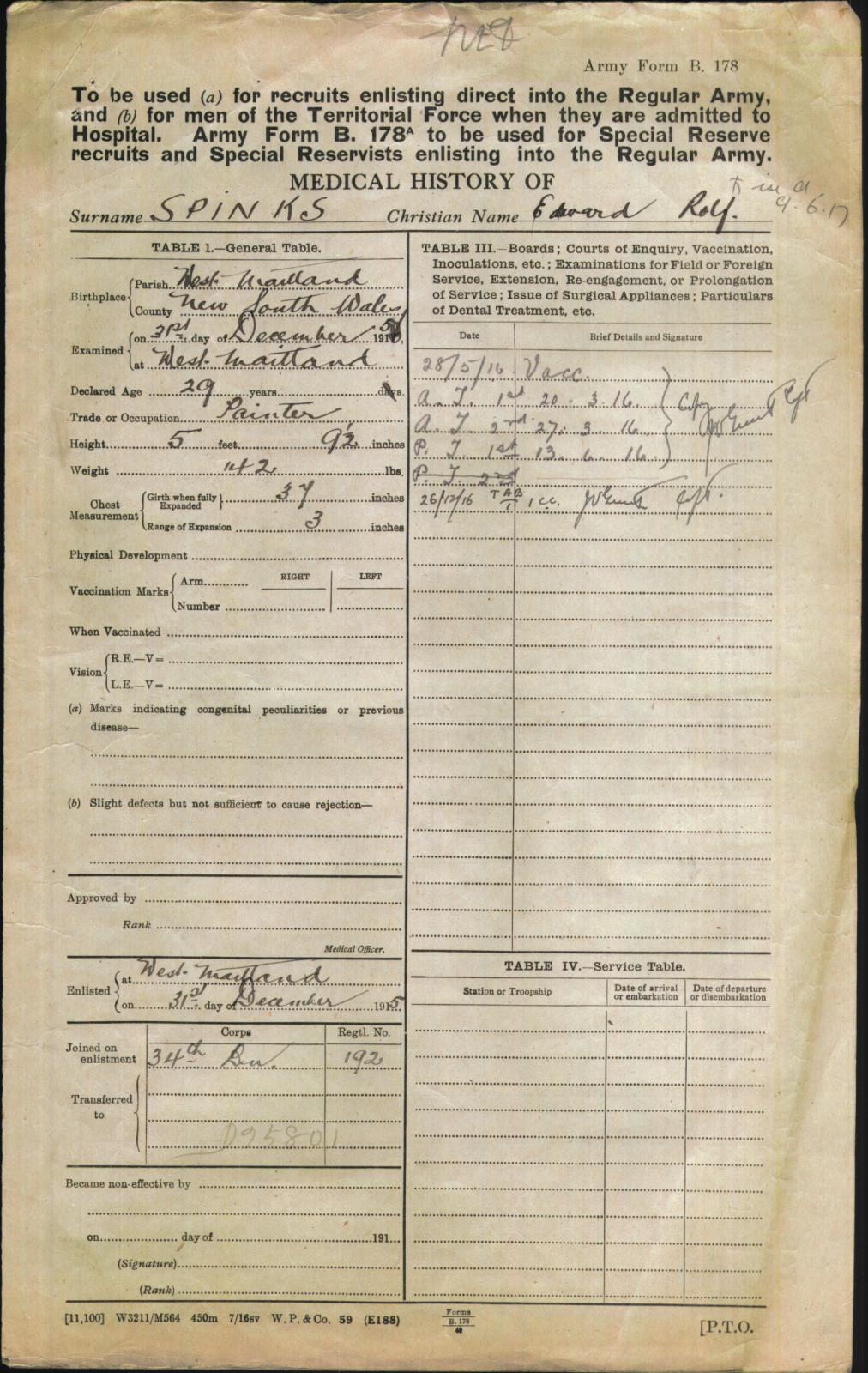
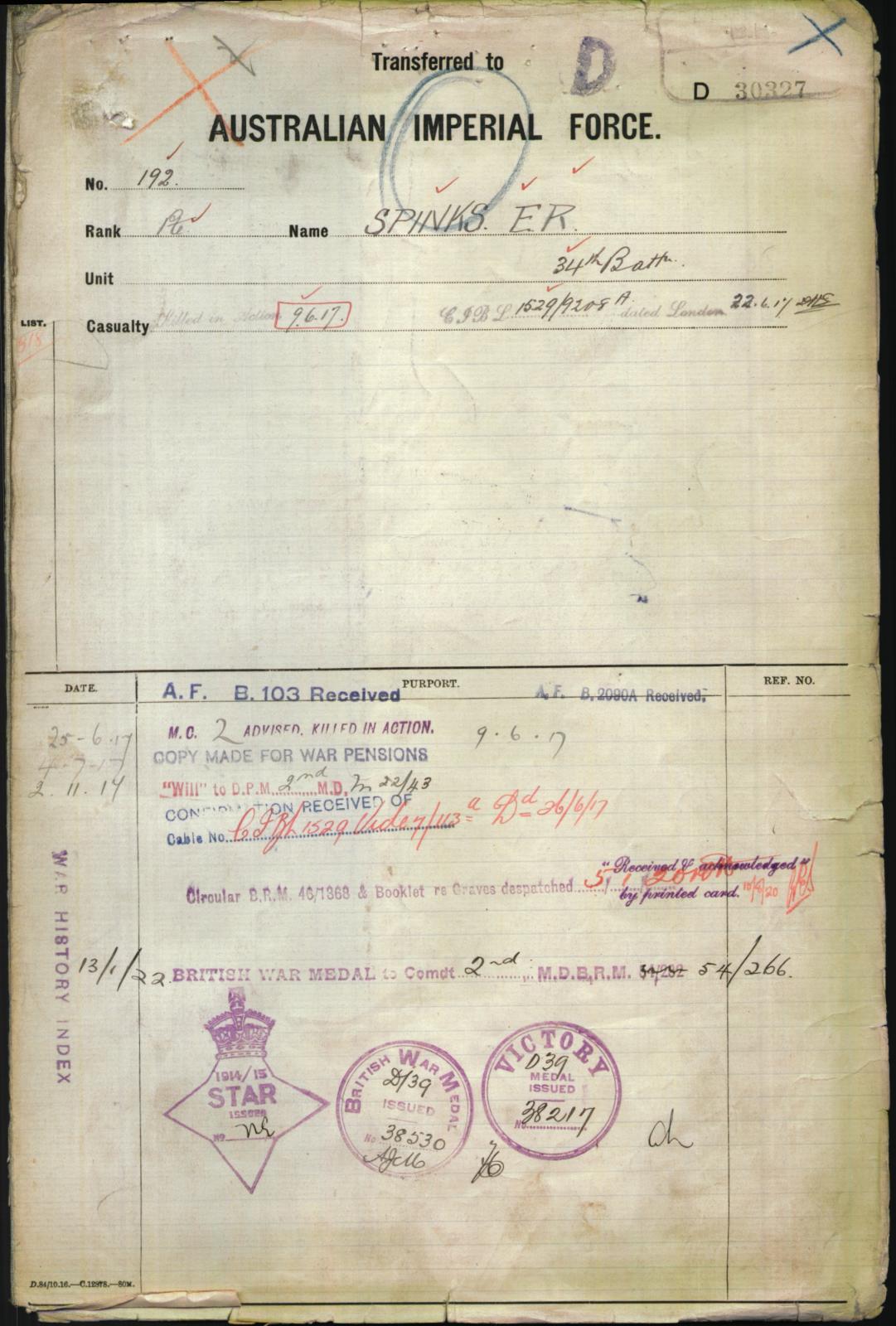
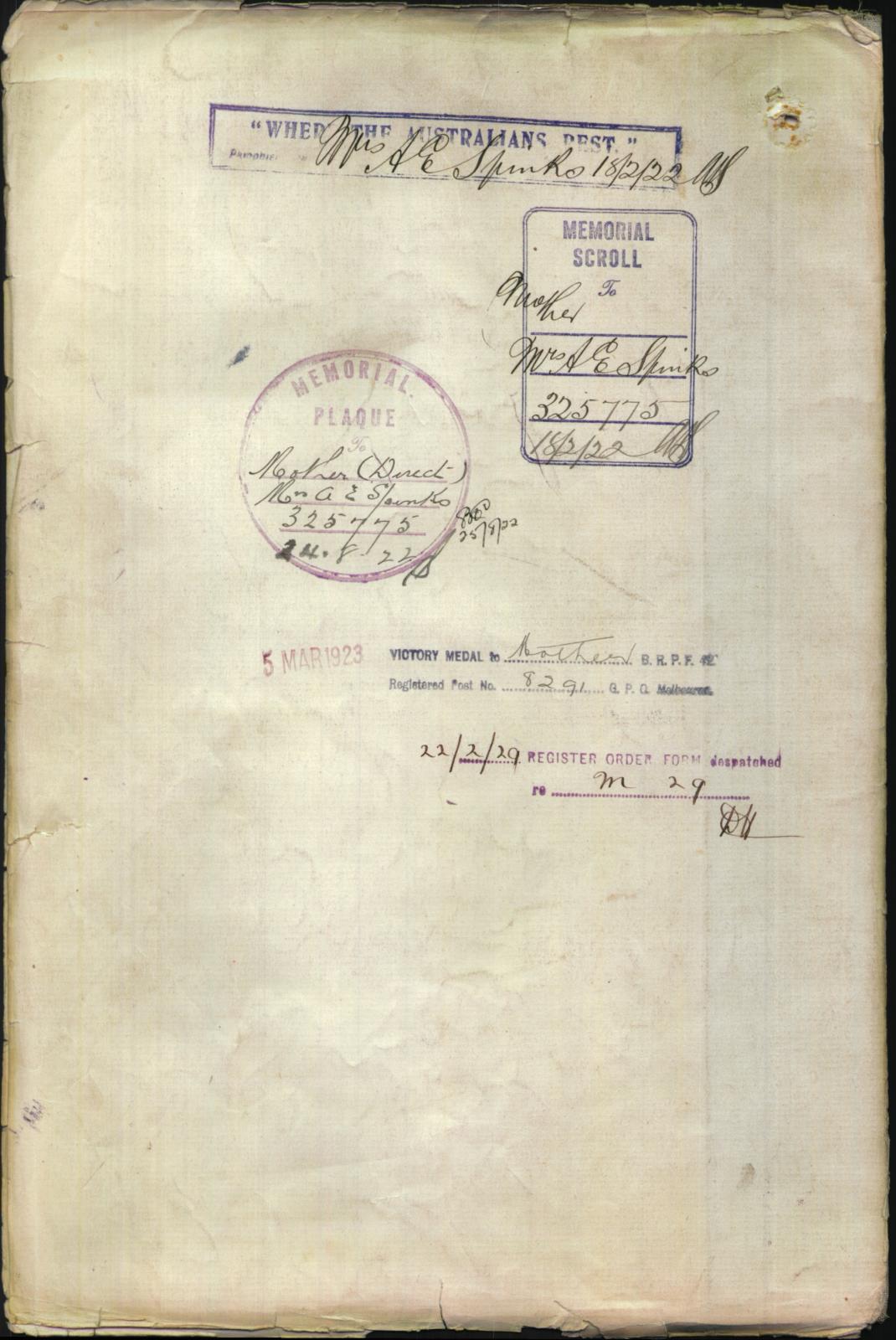
© Commonwealth of Australia (National Archives of Australia)
Under Construction: 10/01/2019.
